Imagine if you could design your own currency. Decide on an image to represent you, pop in your initials, a date and a pretty border, make the die, and then have it struck. Well, that’s what happened within a short period of about ten years in England after the Civil War, between the early 1650’s and the mid 1660’s. And Oxford happened to be one of the largest producers of these ‘tokens’ as they became known, in the country. Tolerated by the authorities to help with cash flow, (until the new king Charles 11 banned them in 1672,) they were issued by local tradesmen and women in the smallest of denominations, mostly farthings and halfpennies, and used as small change for their goods. Beautiful, miniature pieces of art, illustrated with birds, flowers, and the like, they were also a helpful advertising tool. And for us a window into the social history of an Oxford from a bygone era.
I discovered all this by chance. Browsing one day in Antiques on High, a place with a wonderful smorgasbord of offerings, from sheet music to mechanical toys, I came across a cabinet of the things. Packed into small plastic casings and carefully labelled they were on sale from between £10 and several hundred. A rare farthing from Robert Hurley, embossed with a bear, went recently at auction for £3,400. But then its rarity value comes from the fact it’s the only one of its kind, the image almost certainly the eponymous animal featured on the sign of The Beare Inn, then standing on the south side of the High Street. These are collector’s items, the kind of find of which numismatists can only dream. I settled on an Oxford farthing issued by one Thomas Higgs in 1657, a mercer with three blackbirds emblazoned on one side. A snip at £10, (not rare) the price of a couple of pints, which is roughly what it would have bought the day it was minted. I was chuffed. And eager to know more.
So to my delight I was invited to meet Dr Julian Baker – Assistant Keeper of Medieval and Modern Coins, at The Heberden Coin Room in the Ashmolean Museum, a short walk from The Oxford Sausage headquarters. Behind a huge rotating lock on a heavy door, the sort that you only see in films about bank raids, lies one of the most impressive collection of coins in the world. And among them are trays upon trays of Oxford tokens.
Issued with a magnifying glass and white gloves I was encouraged to look closely at the rows of tiny metal keepsakes, while Julian checked out their entries in the 1923 opus, ‘Oxford Tradesmen’s Tokens’ by W. Thurlow Leeds, still the go-to publication on the topic. A charming picture of dipping candles belongs to candlemaker William Appleby who traded from a site where the Examination Schools are now. A pair of scissors for Ann Peirson, (one of three women who issued tokens in Oxford) the widow of William, a tailor operating from a shop on Cornmarket. A cockerel, word play maybe for Michael Bird, a watchmaker also on Cornmarket who we discover was arrested during an anti-popery riot in Oxford in April 1683, but was rescued at the last minute by the large and threatening Protestant crowd. We were rubbing shoulders with the ghostly traders of 17th century Oxford.
And so contributing photographer John Milnes and I set out to see if we could find any traces of the city in which they plied their goods and these tokens circulated. Though the centre of Oxford is much changed, the crossroads at Carfax still gives it a framework from which to work. Armed with a copy of the ‘Leeds’ tome and a little bit of help online from token specialist and enthusiast Dr Melinda Mays, we travelled back in time. Imagine an Oxford city centre constructed around narrow streets and dark alleyways, the upper storeys of houses overhanging the lower. Most tradesmen and women were situated around the central junction of the city. St Aldates was then Fish Street (where fishmongers boned, gutted and shelled their slippery stocks), Queen Street was Butchers Row (a squalid mass of stalls bursting with birds and livestock, piled high with animal carcasses) and Cornmarket (formerly Northgate Street) lined with roofed structures to keep the precious sacks of corn safe from the rain. This was an Oxford where the Sheldonian Theatre was just being built but we were yet to see The Radcliffe Camera. A mile outside the city would take you into open fields and prime forest for hunting. Town and Gown were strictly separated and controlled, (to trade at all you had to be voted in and then pay to become either a Freeman of the City or a member of The University) and skirmishes between the two were violent and frequent. This was a place with a tavern or inn on every corner, a place of cockpits, drinking, prostitution and gambling but also theatres, bowling alleys and racket courts. Where you might make your fortune but just as easily lose it. Busy, noisy, vibrant but also smelly and dirty where life could be brutish and short.
So without further ado, let me introduce you to some of the token issuers who were living and trading during the Commonwealth years of Oxford in the mid 17th century. And let’s start at The Town Hall, or The Guildhall as it was known then.
Photographs of tokens all by kind permission of The Ashmolean Museum, Oxford
Contributing photographer John Milnes
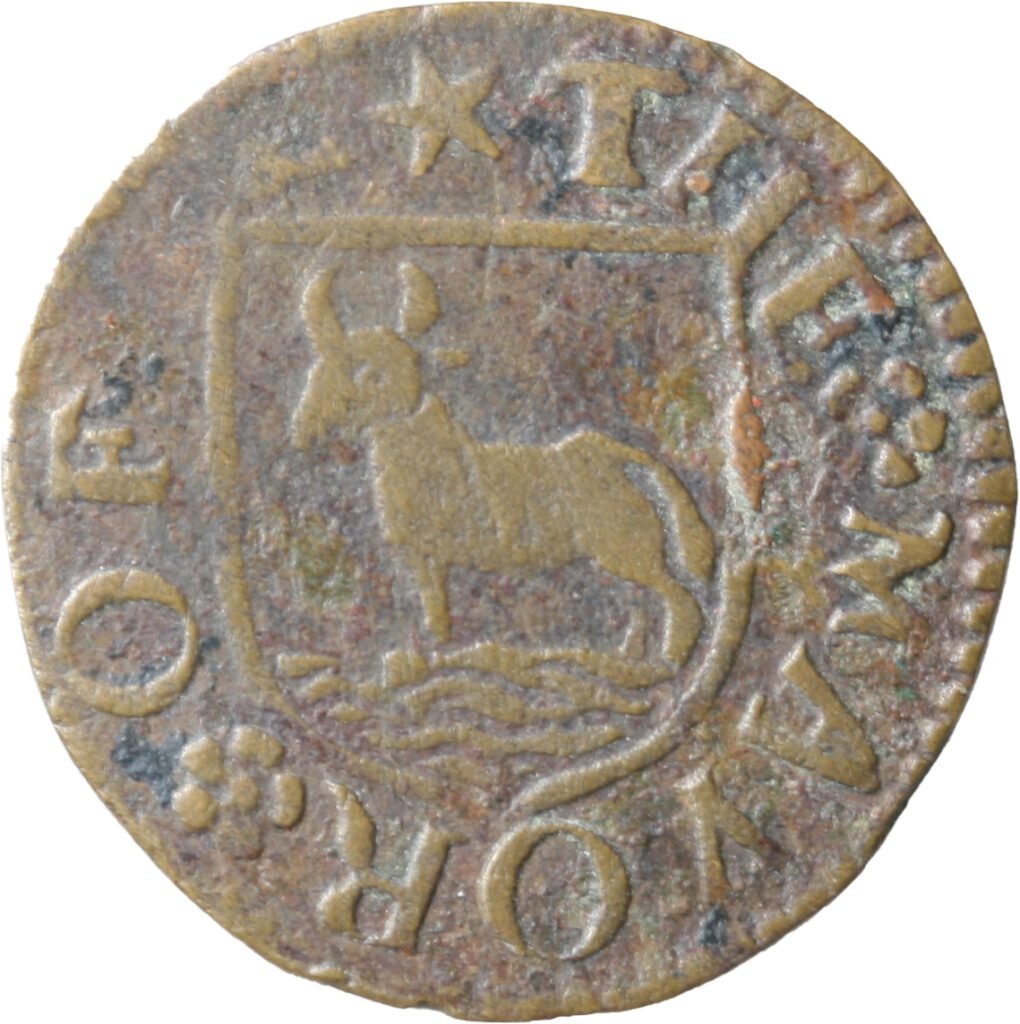
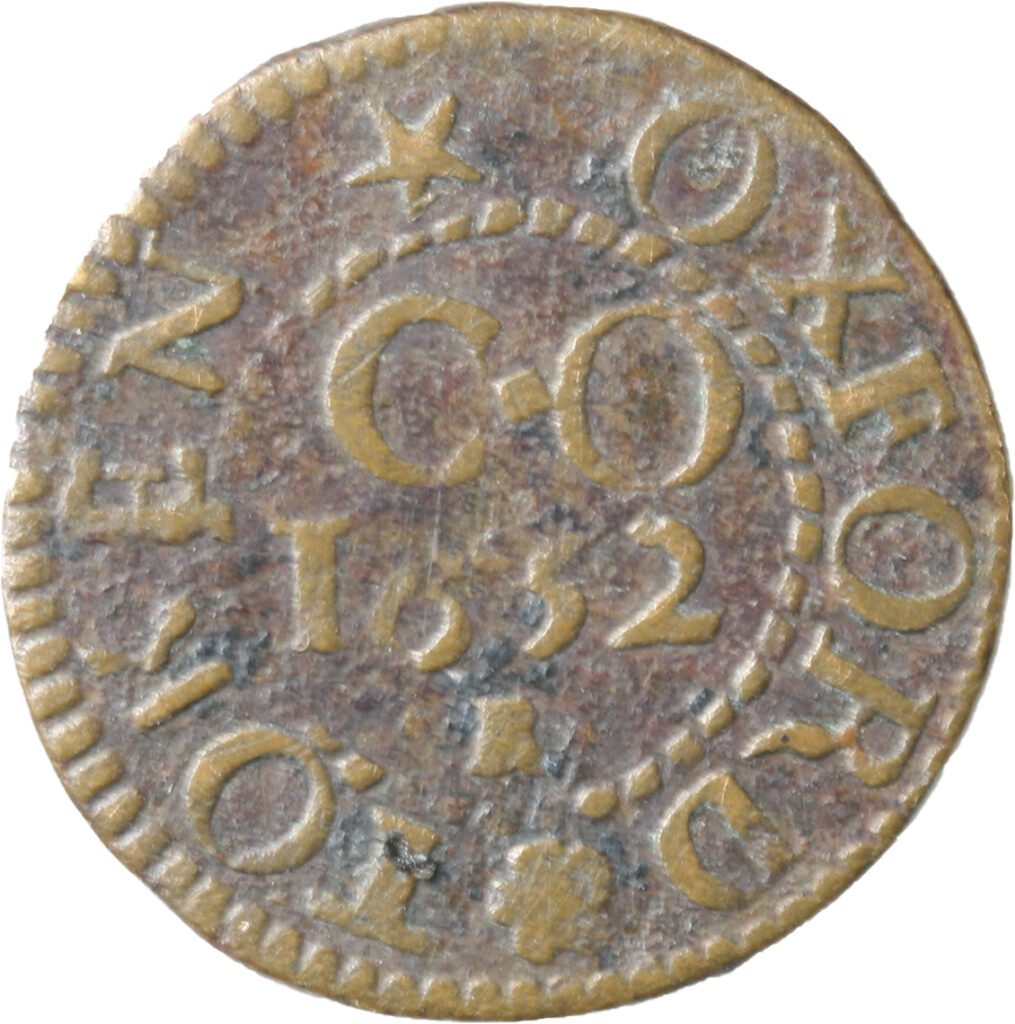
The Mayor of Oxford 1652
The Mayors of Oxford, were the first to issue tokens, using the city arms, as their symbol. In return for 21 shillings of silver they received 20 shillings worth of tokens. The extra charge was to cover the cost of the design, making, striking and transport to Oxford from London where they were mostly minted. However as they were made in copper alloy, the metal was worth considerably less than their face value. So although the issuers had to guarantee to exchange them for official coins at any time, they could and did make a good profit out of the deal.
The serving Mayor when this token was struck in 1652 was Richard Miller, fell-monger, which is somebody who deals in animal skins.
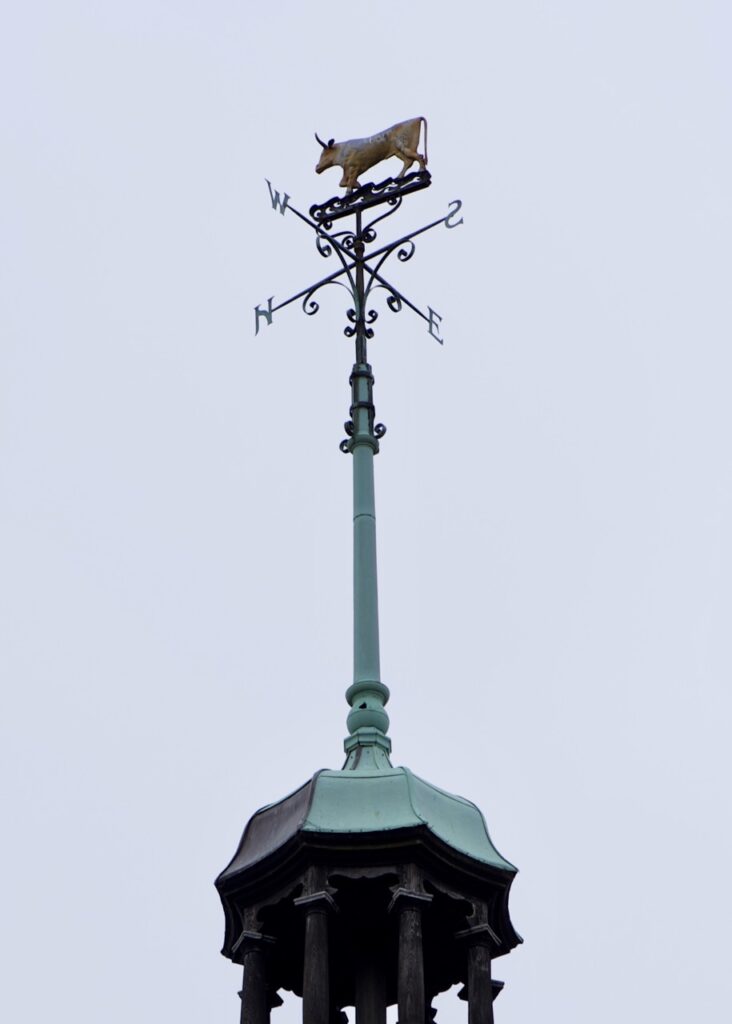
The City of Oxford Arms still tops the Victorian Town Hall we use today.
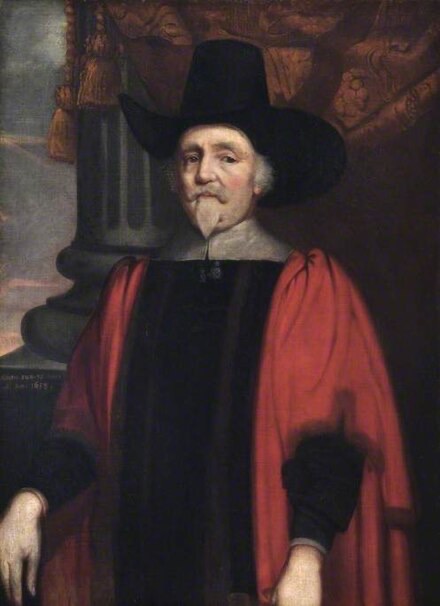
Portrait from Oxford Town Hall
John Nixon was Mayor of Oxford three times during the time our tokens were in circulation. A wealthy merchant farmer he was a keen Parliamentarian and lived opposite the Church of St Mary the Virgin where Oriel College is now. An advocate of education as a leveller, he set up a grammar school for the sons of freemen which continued to take boys for over 200 years.
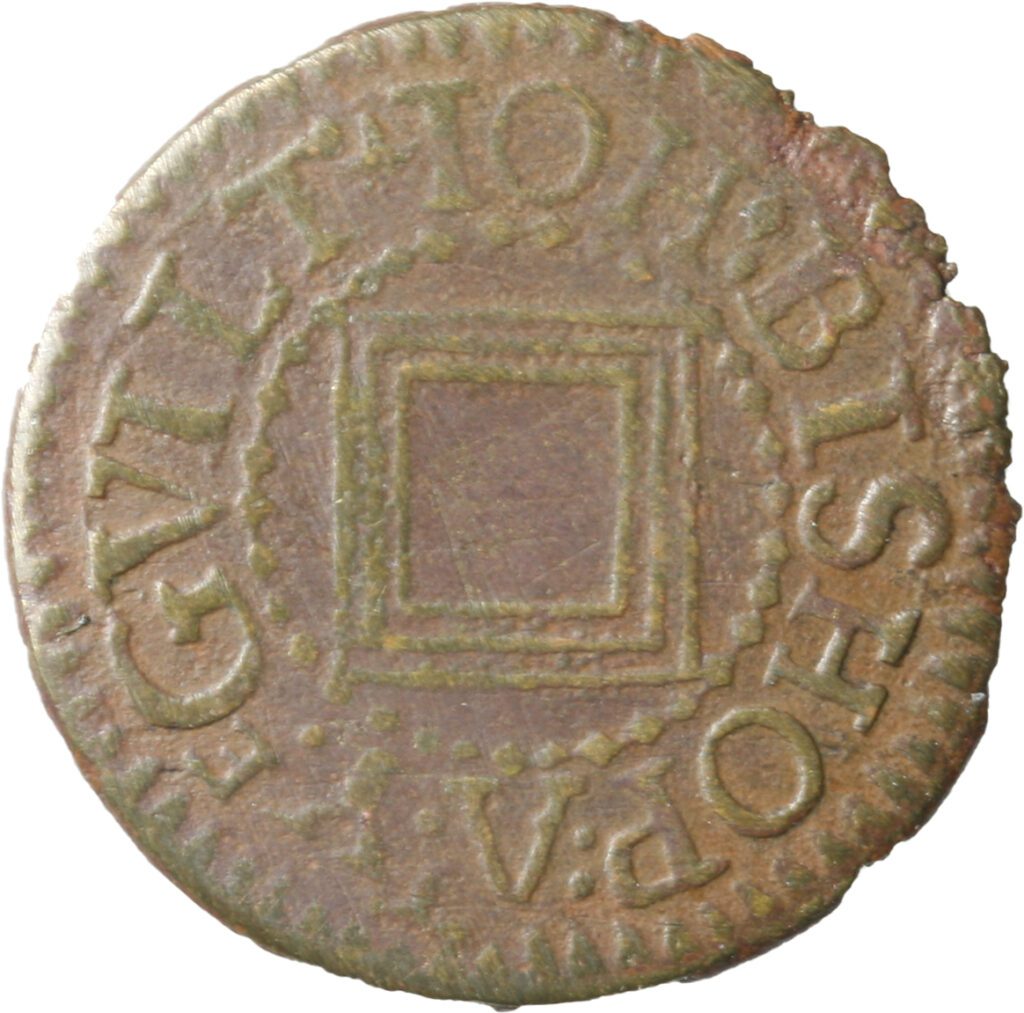
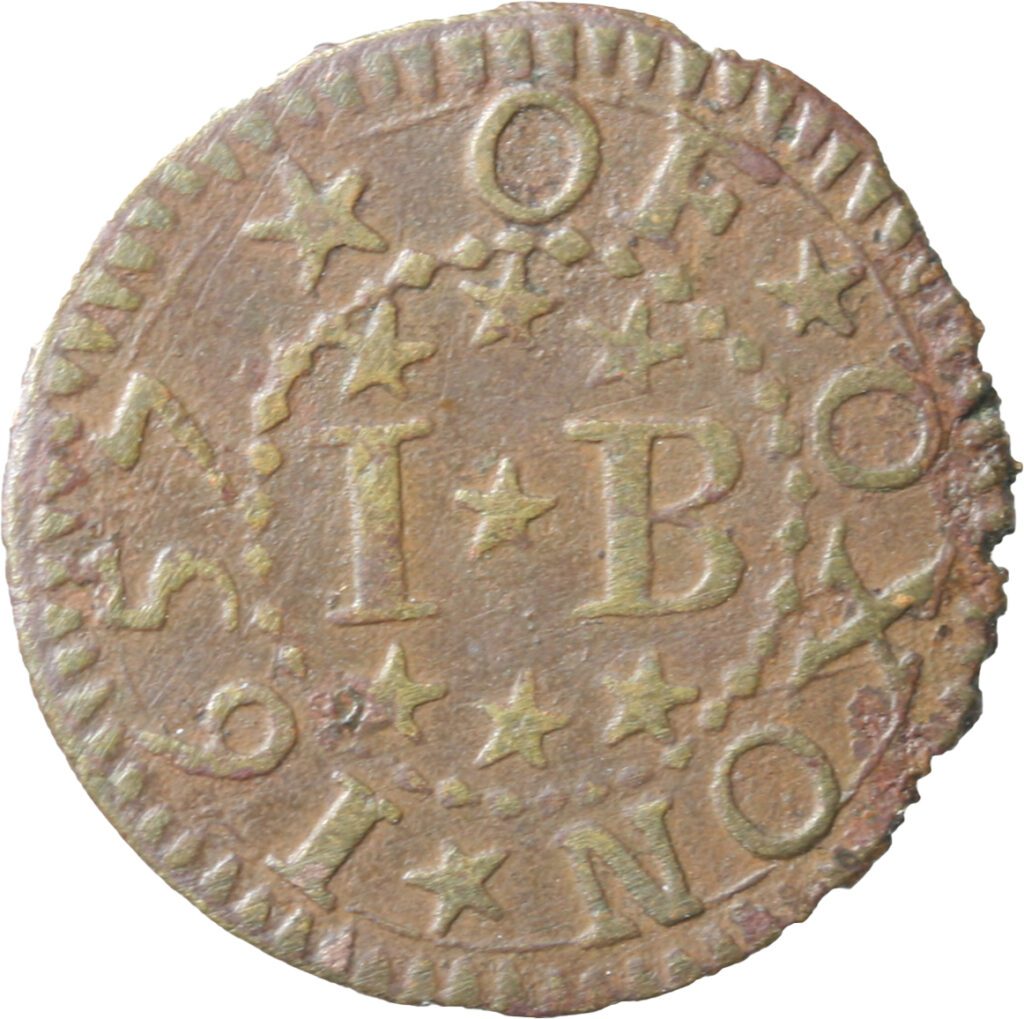
John Bishop 1657
John was a milliner, who lived with his wife and four children near The Mitre Inn. Like most tradesmen he was expected to take part in the civic life of the city once he was a freeman – he was first a constable, then a chamberlain, then a bailiff. A framed looking glass is pictured on the front of his token. He issued three batches of these tokens, in 1657, 1663 and 1669 which means his hats must have been very popular.
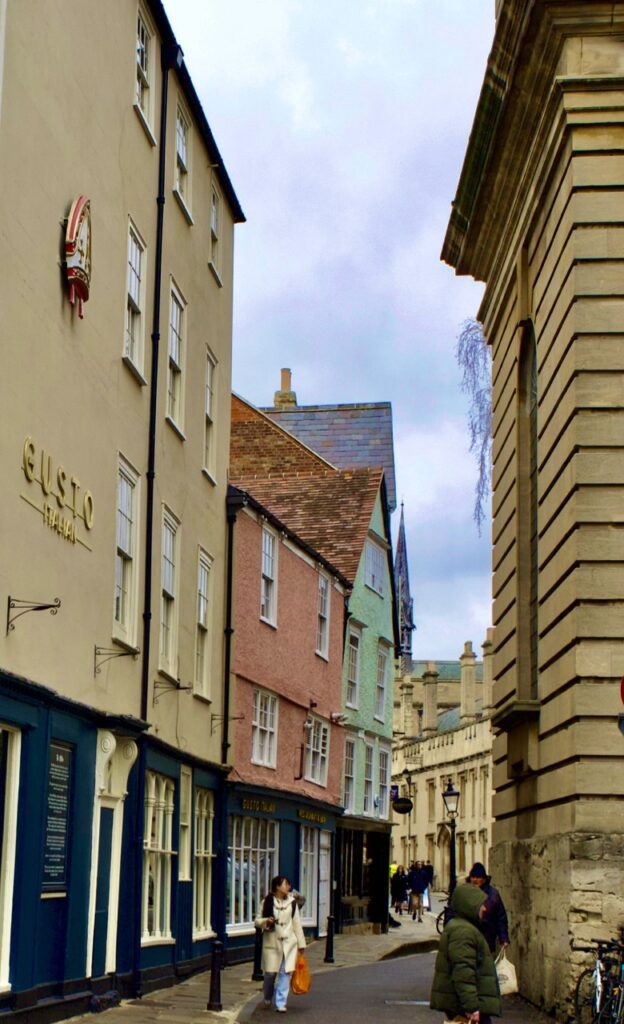
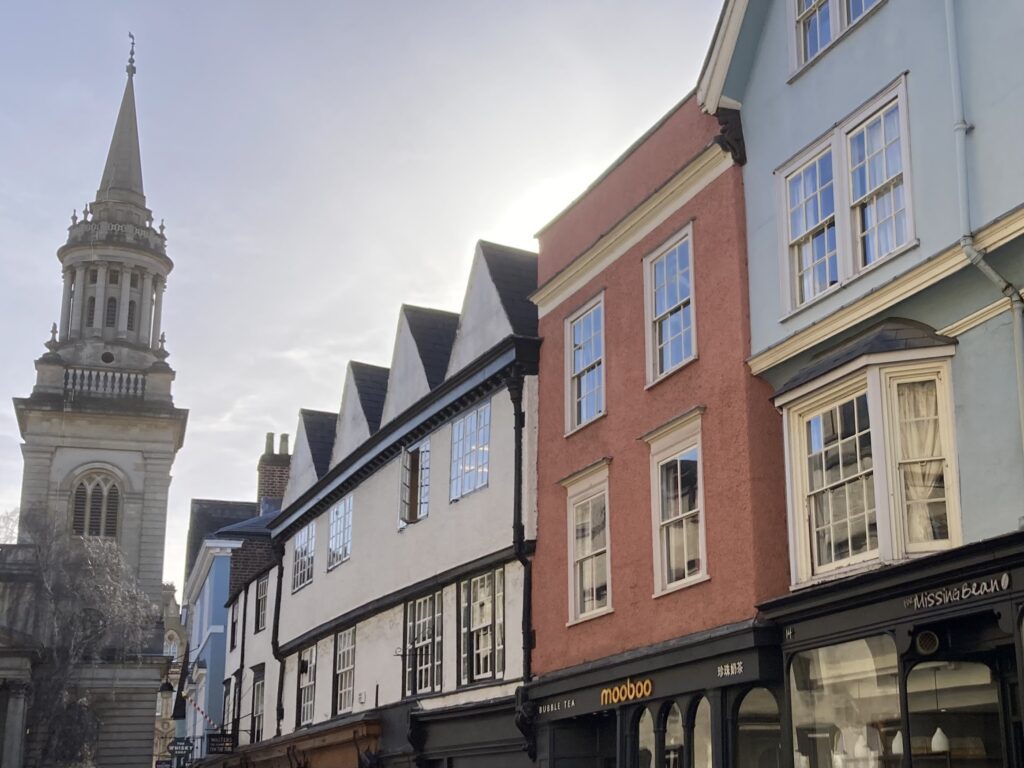
We are not sure exactly where Bishop lived, but we do know he traded from a shop to the north of The Mitre pub, one of Oxford’s oldest coaching inns, now an Italian restaurant. You can just imagine his ‘looking glass’ sign hanging from one of the buildings above, the top photograph looking north along Turl Street, the lower looking south. Although the famous tower and spire of All Saints’ Church you see here, believed to have been designed by Nicholas Hawksmoor, would not have been erected in Bishop’s day, the church certainly was as was the parish it served. It’s now the library for Lincoln College.
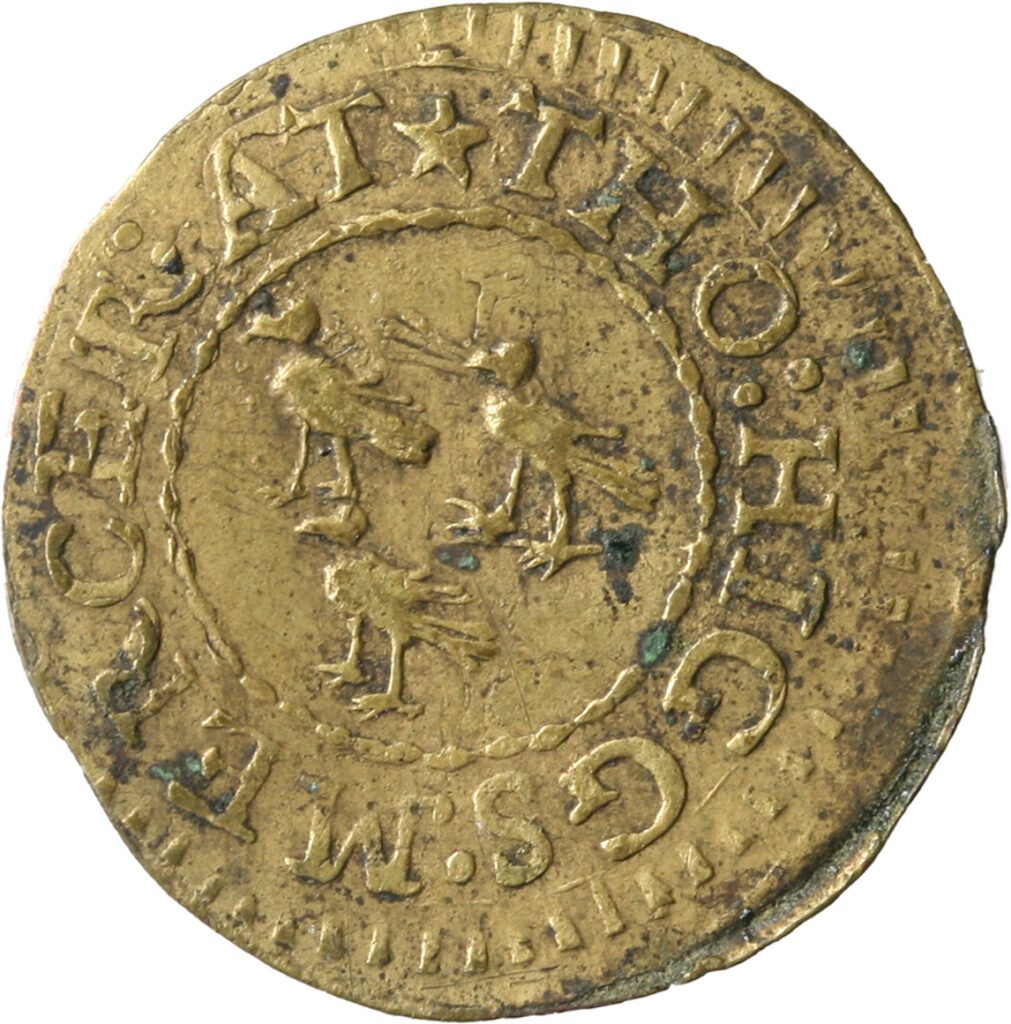
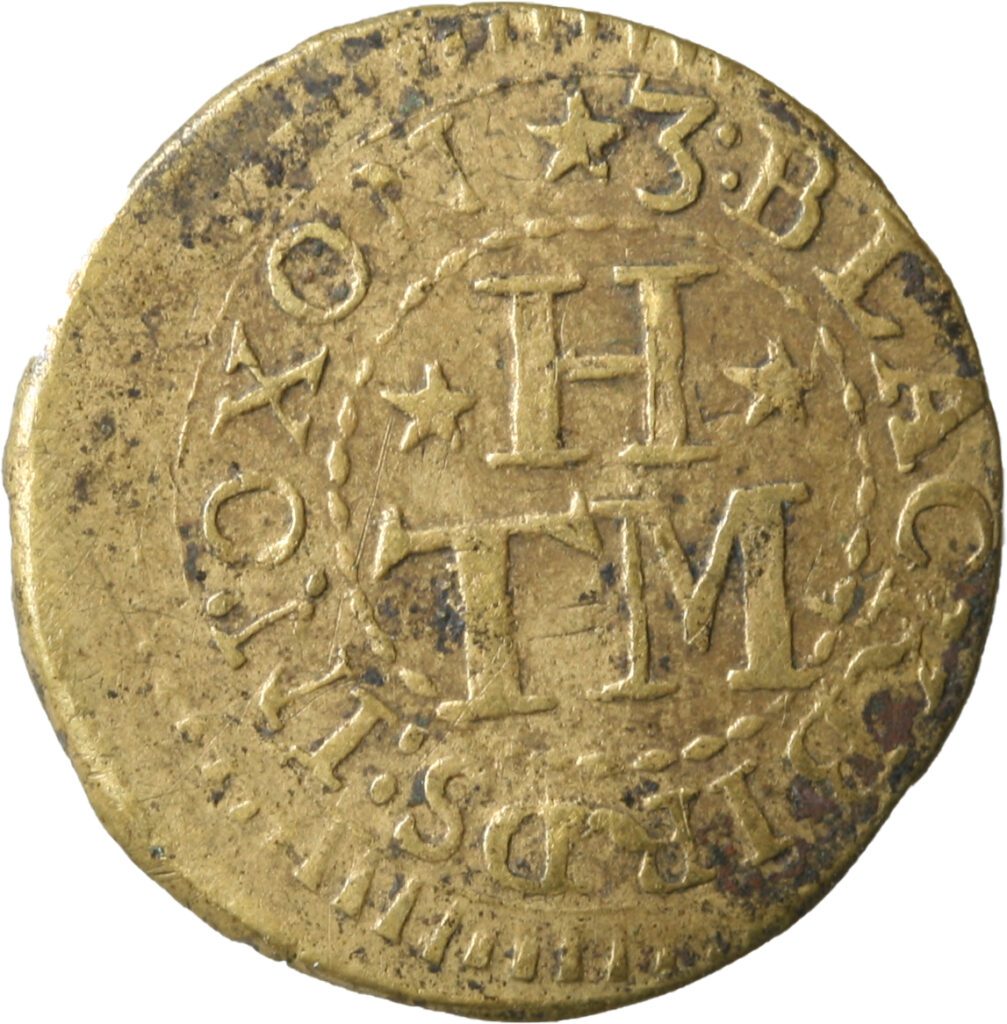
Thomas Higgs 1657
I discover the man who minted my token was Thomas Higgs, a cloth merchant who lived at 42 High Street. This was in the parish of St Peter in the East, a pre-Norman church near the east gate of the city, now the library for St Edmund Hall. These shops fronts (below) remain little changed but have housed milliners, stationers, cutlers, and more recently a chemist and vacuum cleaner shop since his day. Why Higgs chose three blackbirds as his symbol, it is unclear. Perhaps it was the name of his shop. There was a farm to the east of the city called Blackbird Leys, after which the present suburb of Oxford is named.
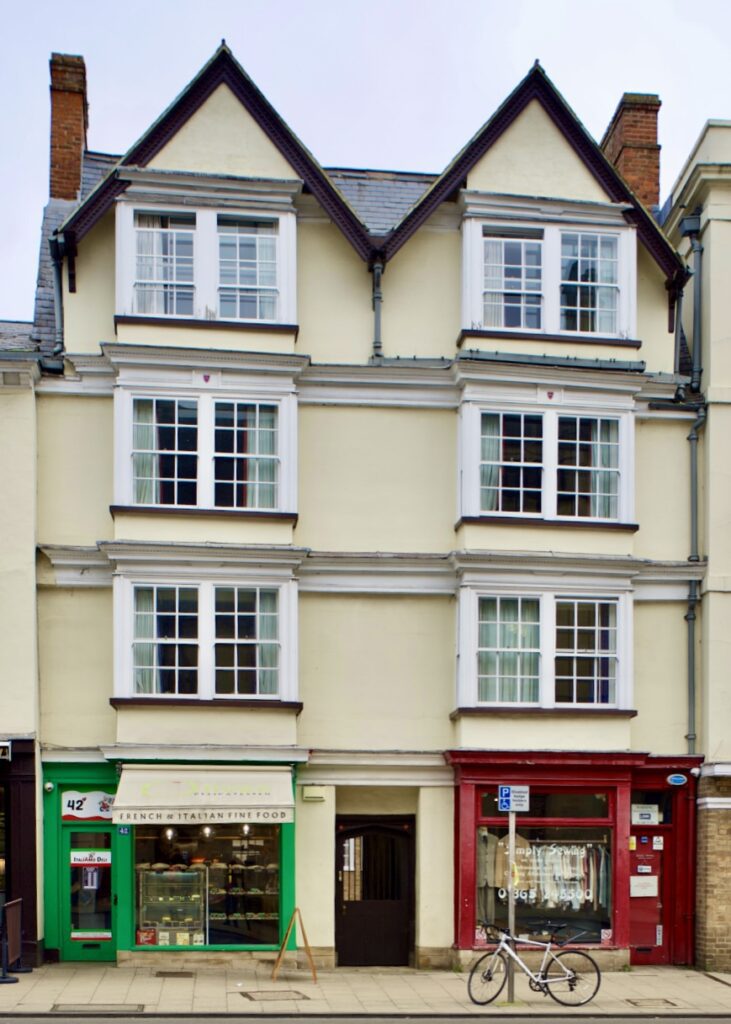
No 42 High Street as it is today. Directly opposite where I bought my token, about 400 years after it was first issued. It hadn’t gone far!
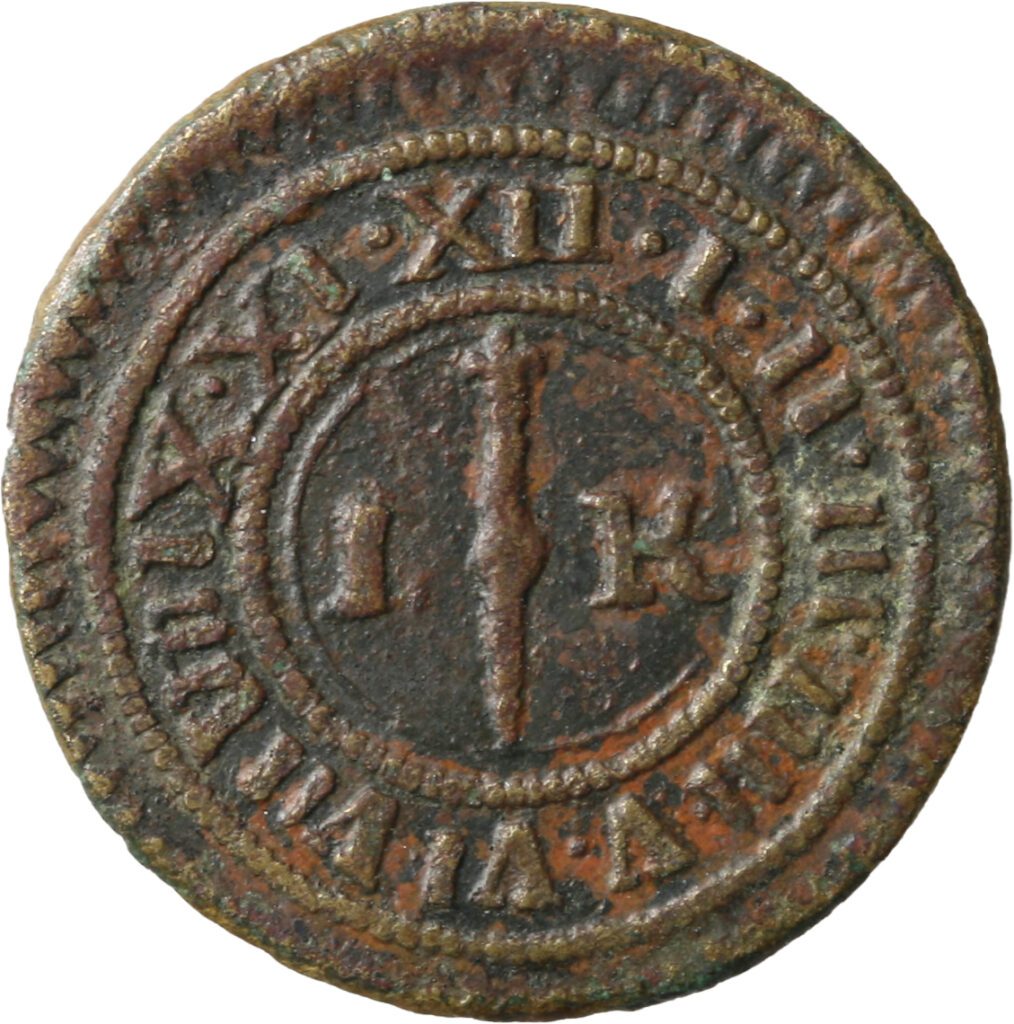
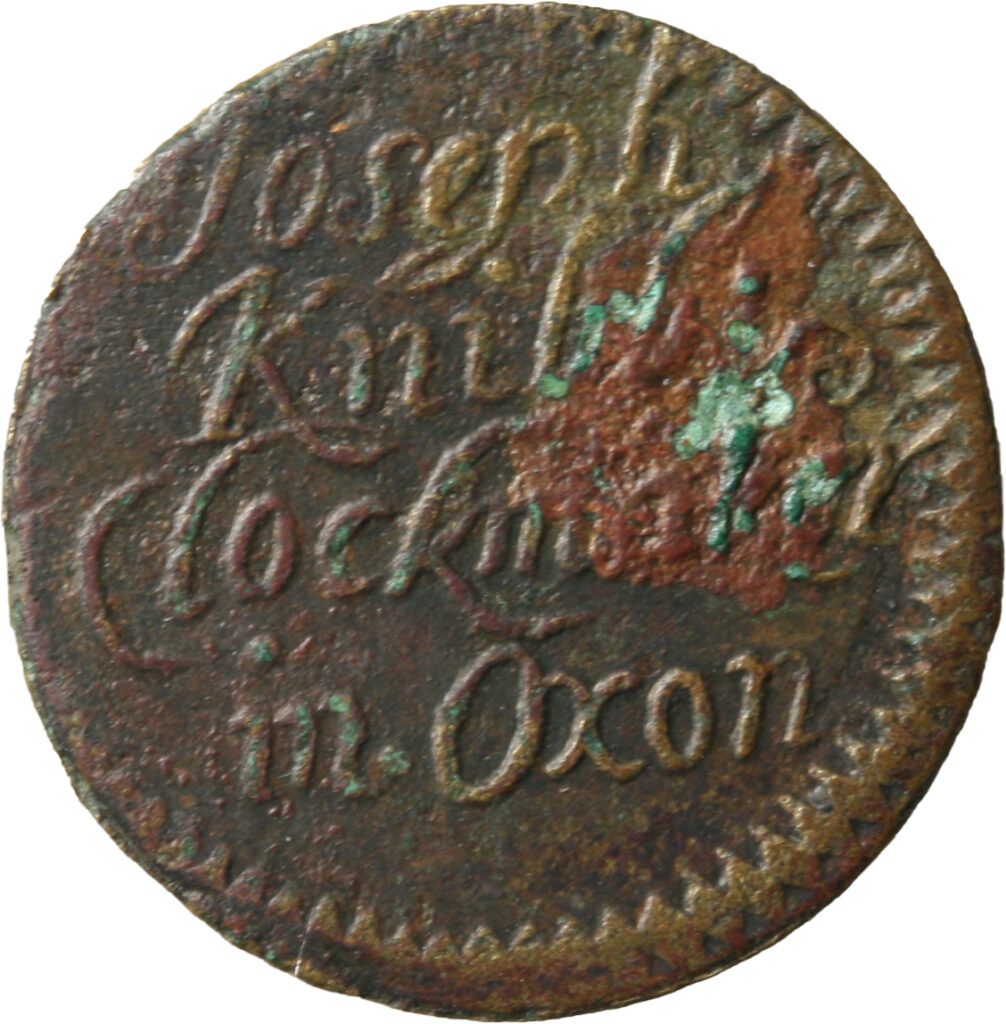
Joseph Knibb (1640-1711)
Knibb was a watch and clockmaker and so has used a clock-face for his die. But if you look closely you can see that they ran out of space – there is no ten (X) on the dial. Although Oxford was the leading centre for clock making outside the capital in the 1600s, it took Knibb a while to get going. Denied entry into the city guild, he took a job as a gardener for Trinity College in order to trade under University rules, and set himself up in a shop in Holywell. Soon he was invited to become a freeman of the City. You will find several of his clocks in The History of Science Museum including an early turret clock made for Wadham College. And as his fame grew, he headed to where the money was, London, making several clocks for Charles 11 including the clock at the State Entrance to Windsor Castle. He became a wealthy man as a result, leaving the Oxford business to his brother John who became Mayor of Oxford twice. One of the many privileges of the role was to attend a coronation which he duly did – when William and Mary were crowned in 1689.
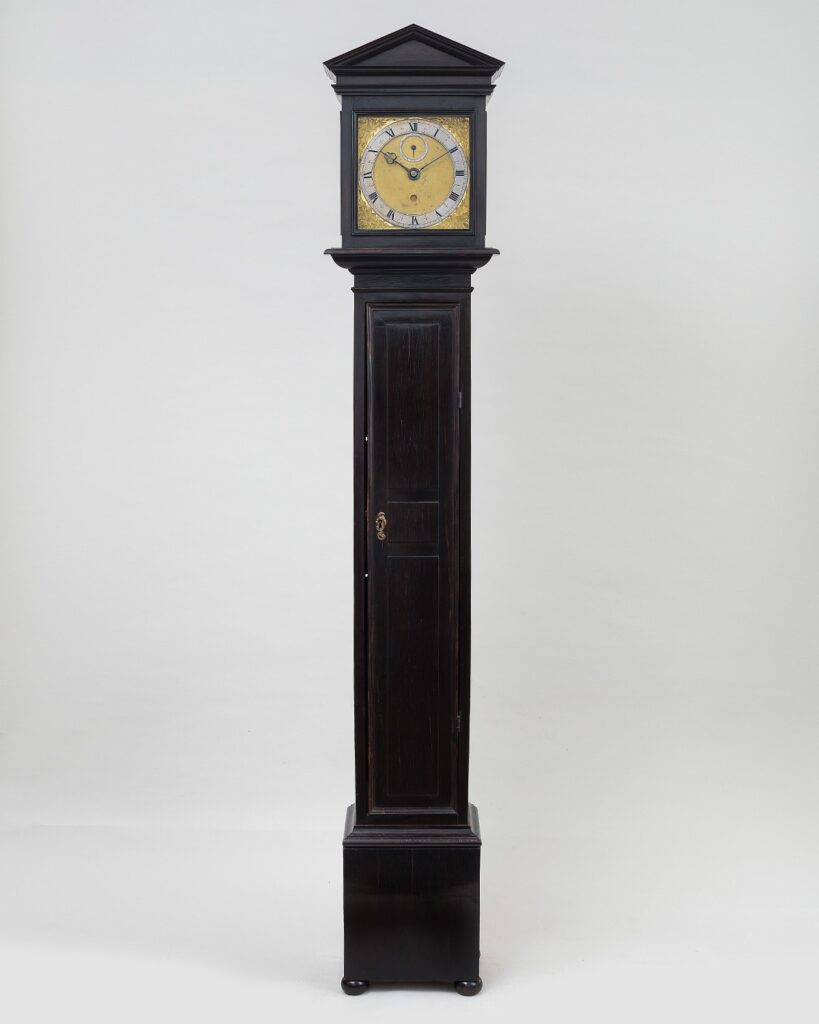
A Joseph Knibbs ‘turret’ clock.
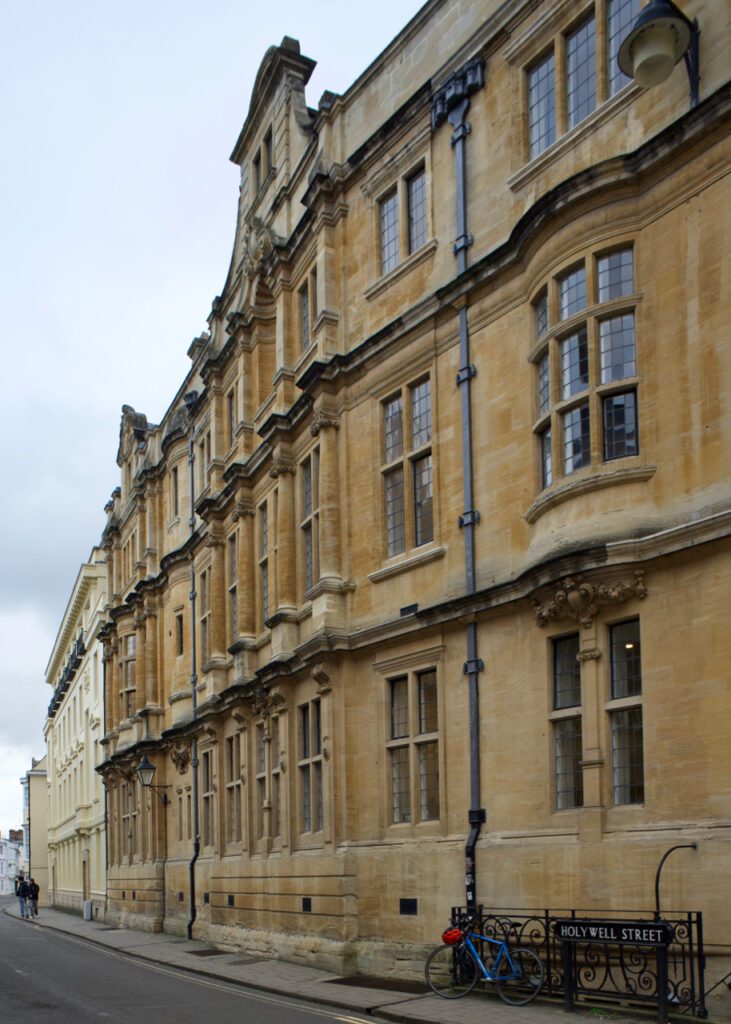
Joseph and John Knibbs lived together on the south side of Holywell street, probably on the site of the former Indian Institute, now the Oxford Martin School. His house would have looked more like the 17th century shopfront pictured below, further down the street. Holywell Street still retains many buildings from this era.
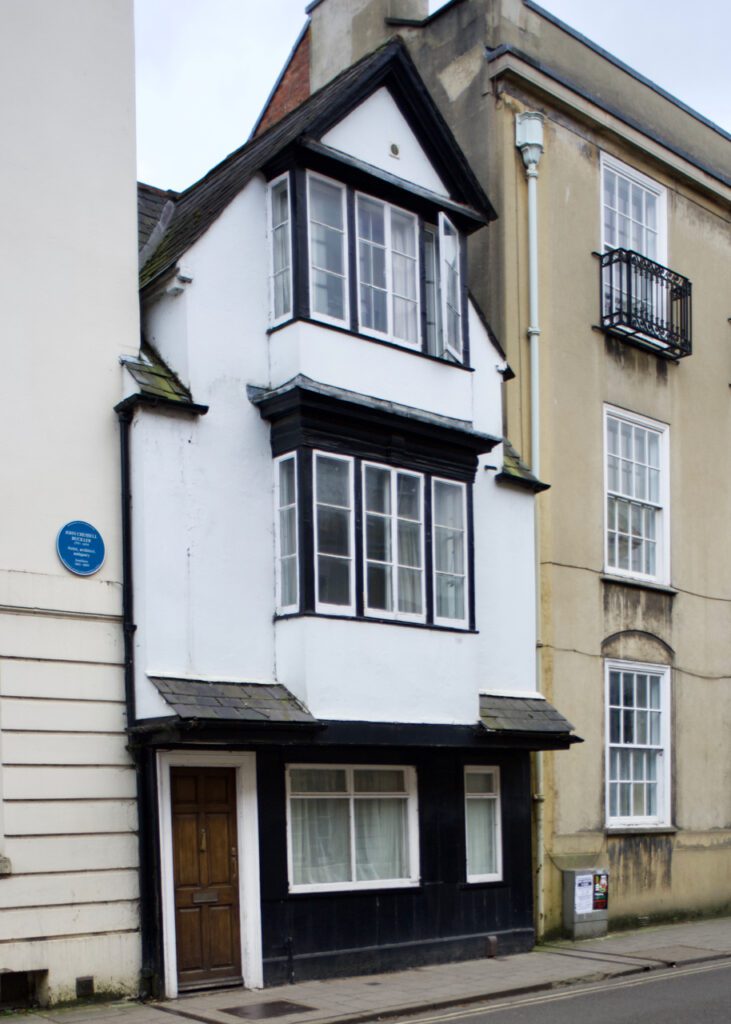
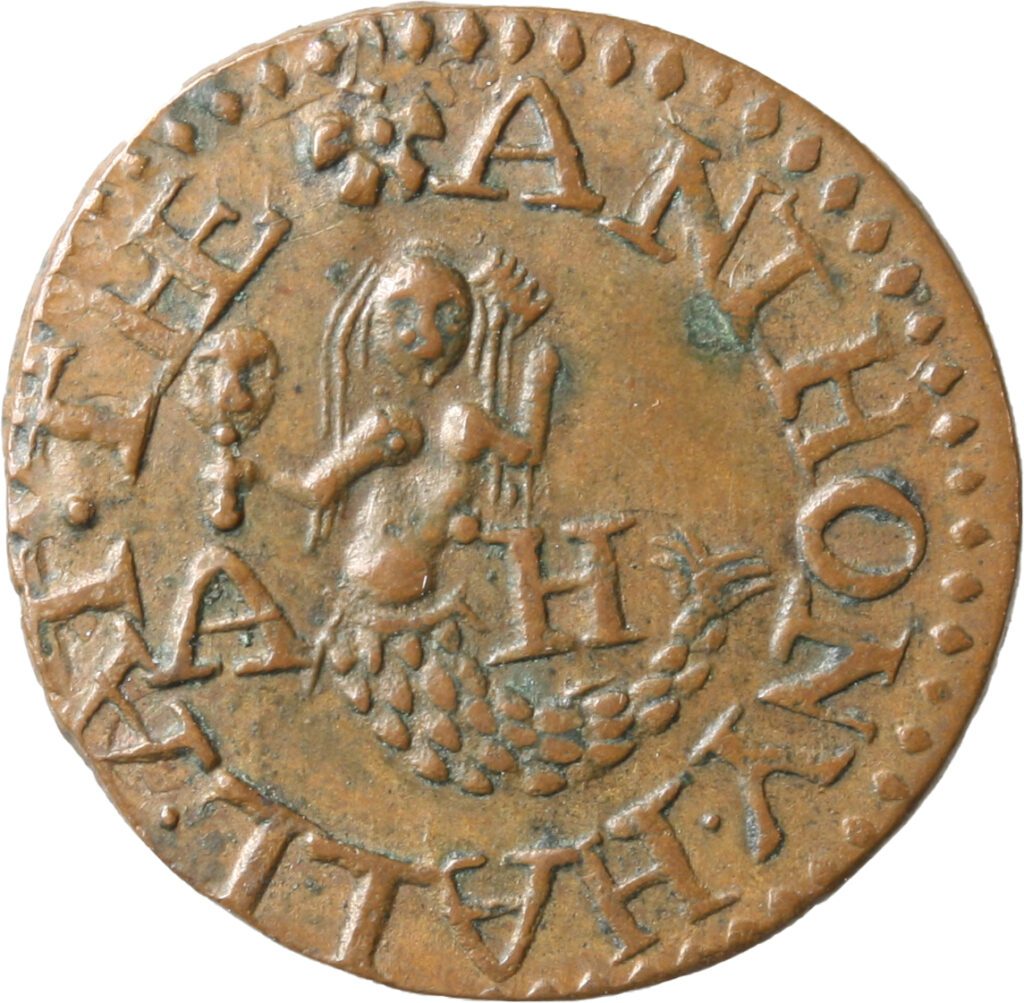
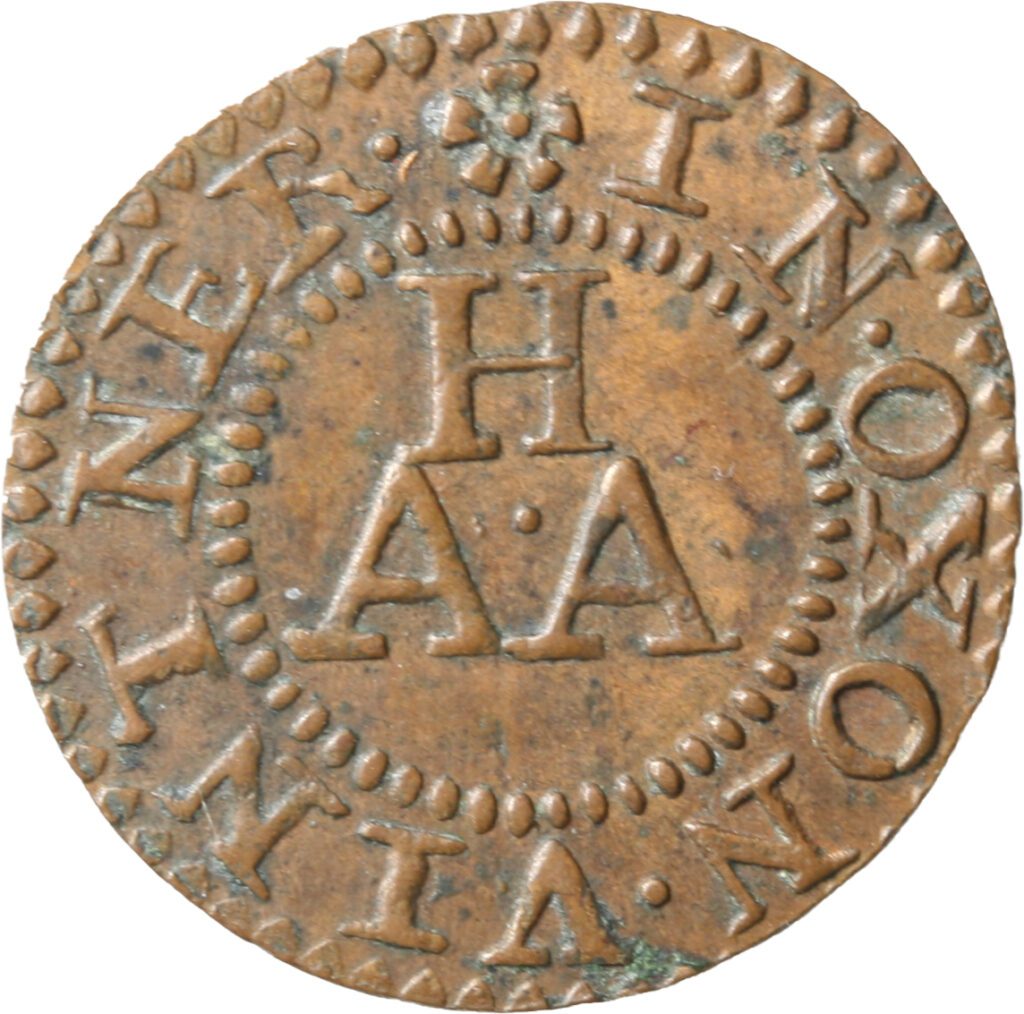
Anthony Hall
An Oxfordshire boy from Kirtlington (he’s buried in the church there) and vintner by trade, by 1661 Anthony Hall was leasing the Mermaid Tavern on the south-west corner of Carfax, where the Santander Bank is now. This was once the Swindlestock Tavern, the site of the St Scholastica Day riots in February 1355. The most famous of the Town and Gown brawls, 62 students and 30 townspeople were killed.
Hall continued the tradition of animosity by a comment he made in his inaugural speech as Mayor. Speaking to an already alcohol fuelled mix of students and locals he announced that though he may ‘not speak French or Spanish but if they would walk to The Bear, they would find he could speak English (meaning give them English ale or beer).’ The students took umbrage and started a fight which continued for a week.
The two A’s on the reverse side stand for Anthony and his wife Anne. The couple’s son was also called Anthony, who after his father’s death turned The Mermaid into the music club of its day – a lively place by all accounts. Anthony Junior played the violin, but singers, players and poets were frequent performers. He had four children, of which only one survived, another Anthony.
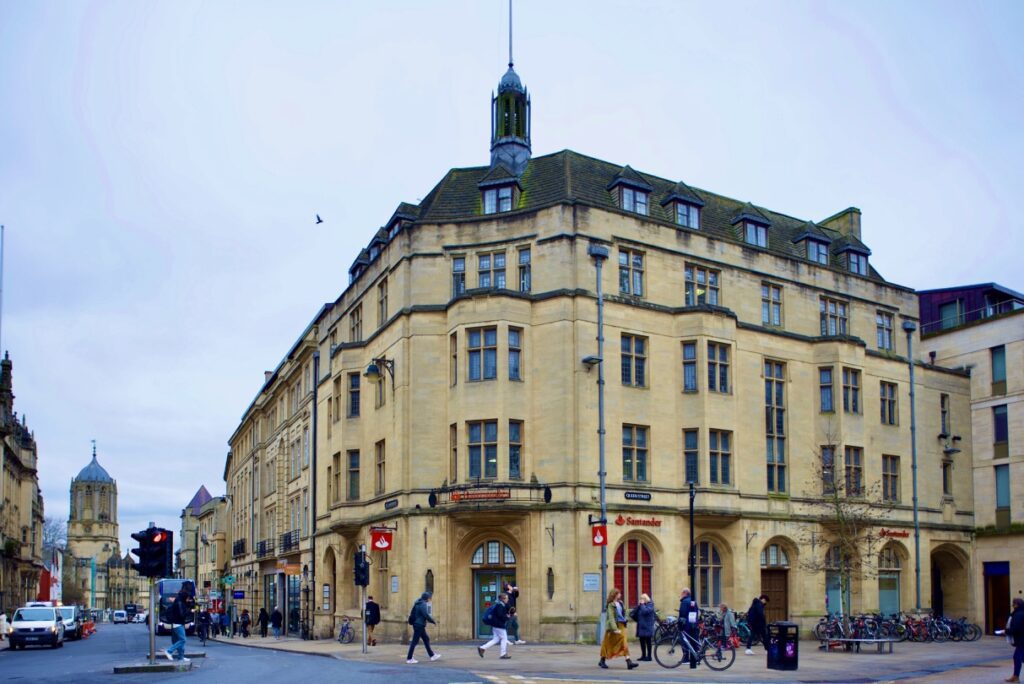
The site of The Mermaid Inn – its central position making it the place to pick a fight, which still continues to this day.
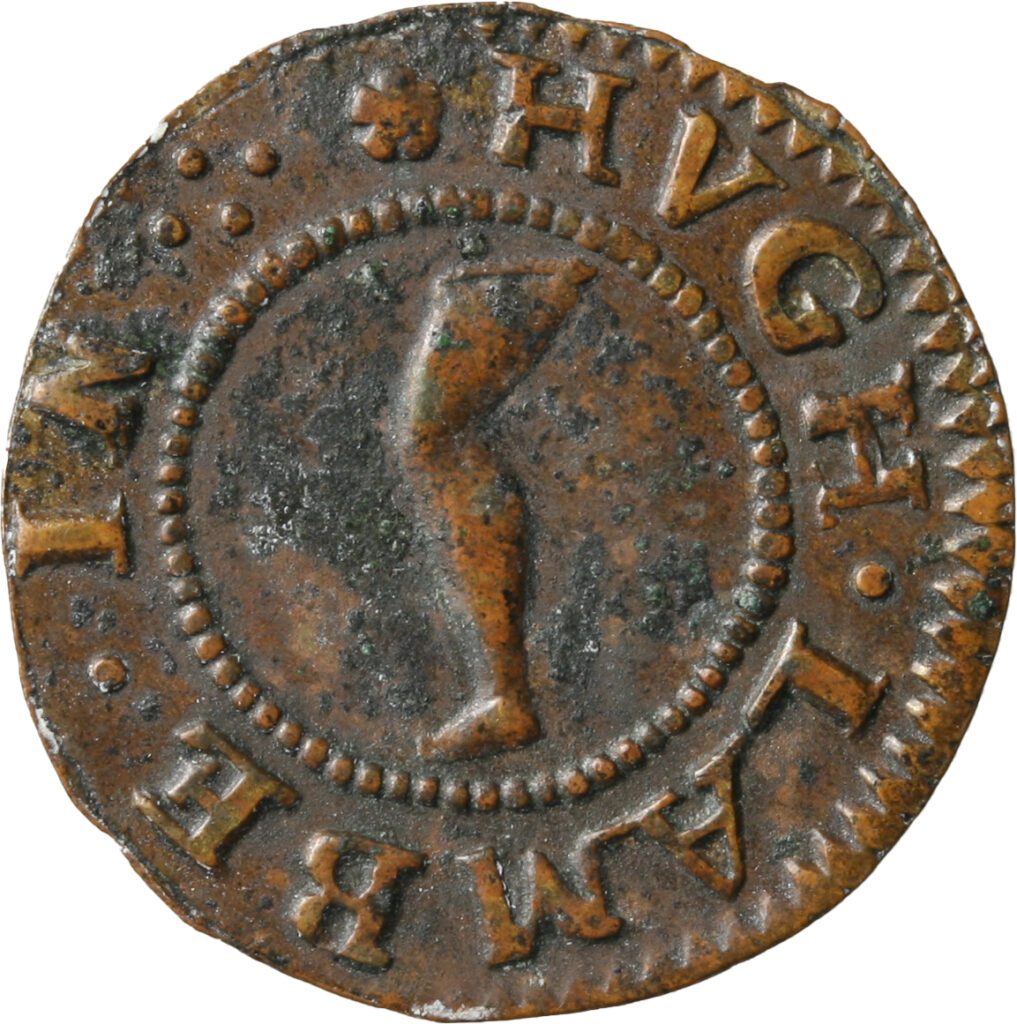
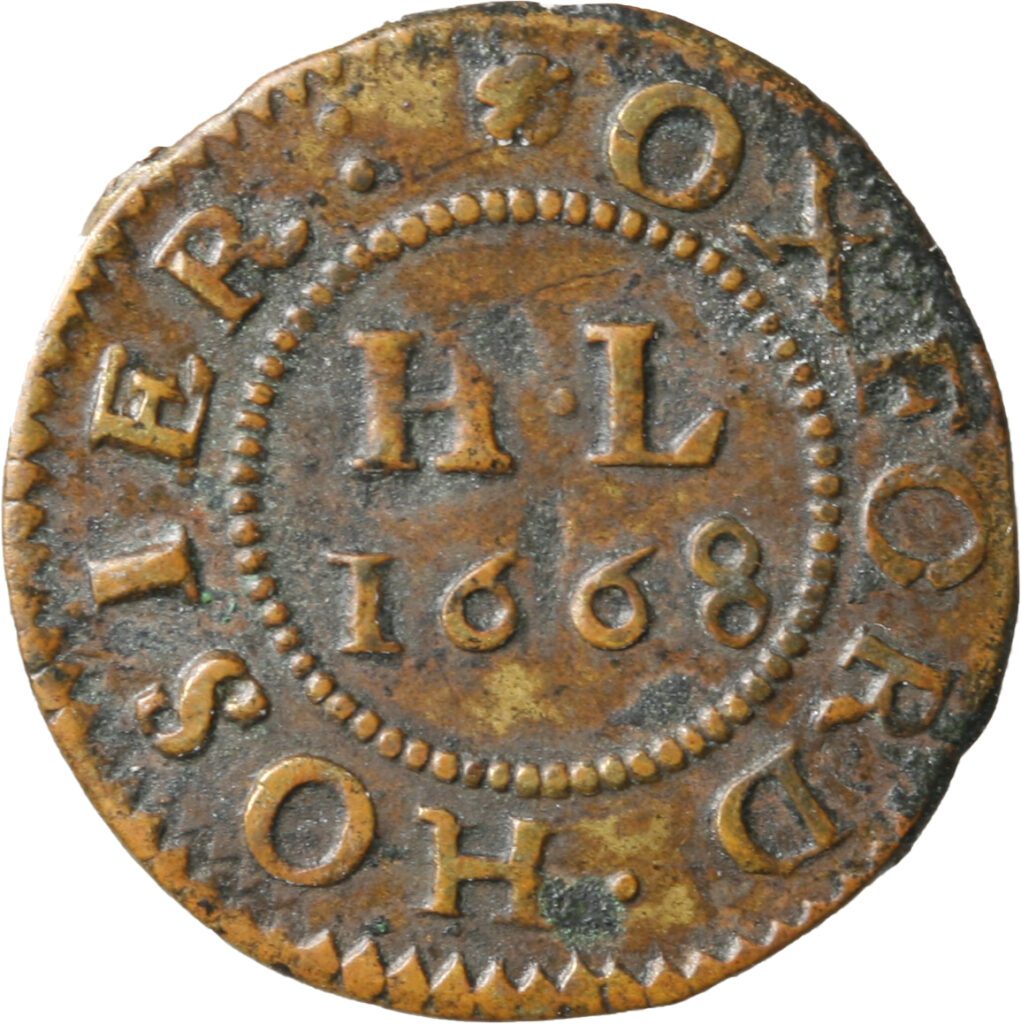
Hugh Lamb 1668
We don’t know much about Hugh Lamb, but I love the leg that he has used on his token. He was after all a hosier so it makes complete sense. He lived in the west of the city, a place he would now find unrecognisable.
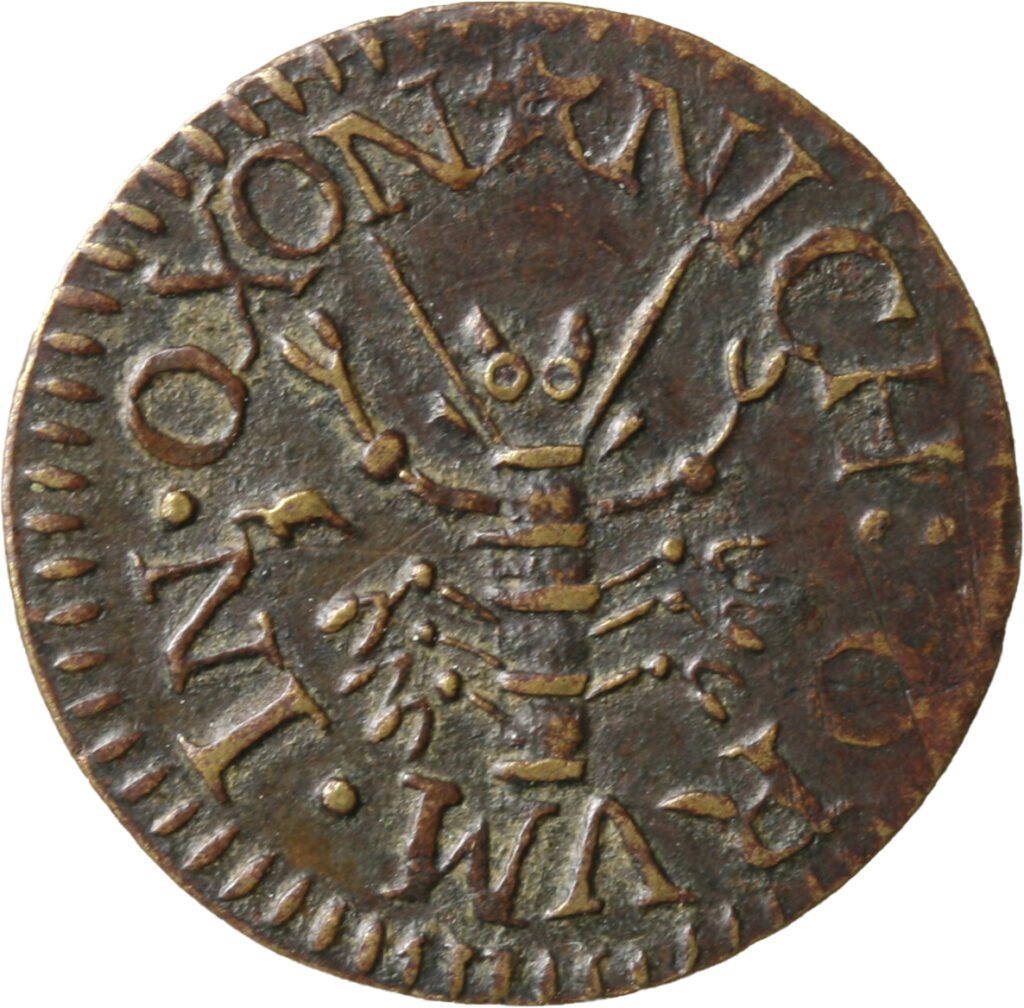
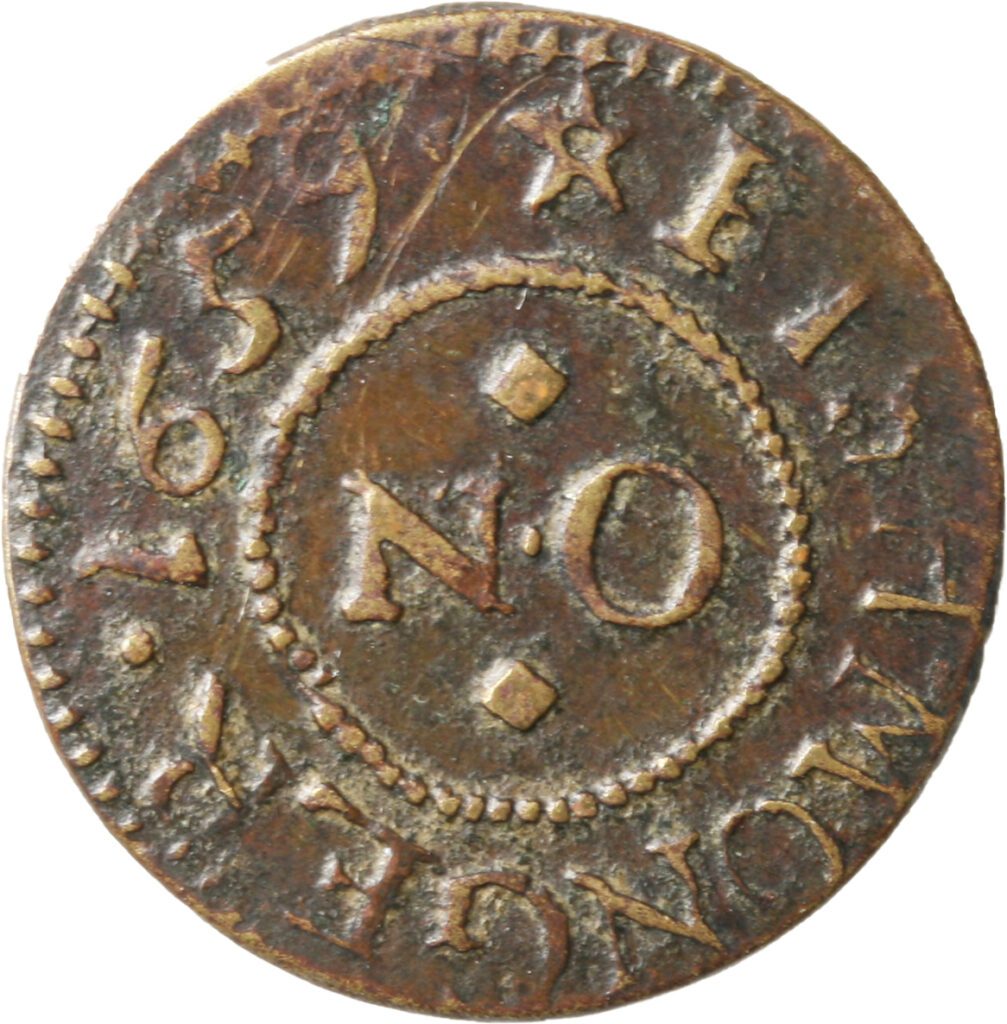
Nicholas Orum 1659
Nicholas Orum was a fishmonger, hence the crayfish symbol, and at one time lived on Carfax, a few hundred yards from his place of work, where Lloyds bank is now. To issue his own tokens suggests he was doing well at one point in his life, but something, somewhere went wrong for him. He is recorded as being reprimanded first for selling fish without a licence, and then for failing to attend his stall in the Fish Market (now St Aldates) for days on end. As a result he was demoted to working from the lower end of Fisher Row off Hythe Bridge Street. He ended his days penniless.
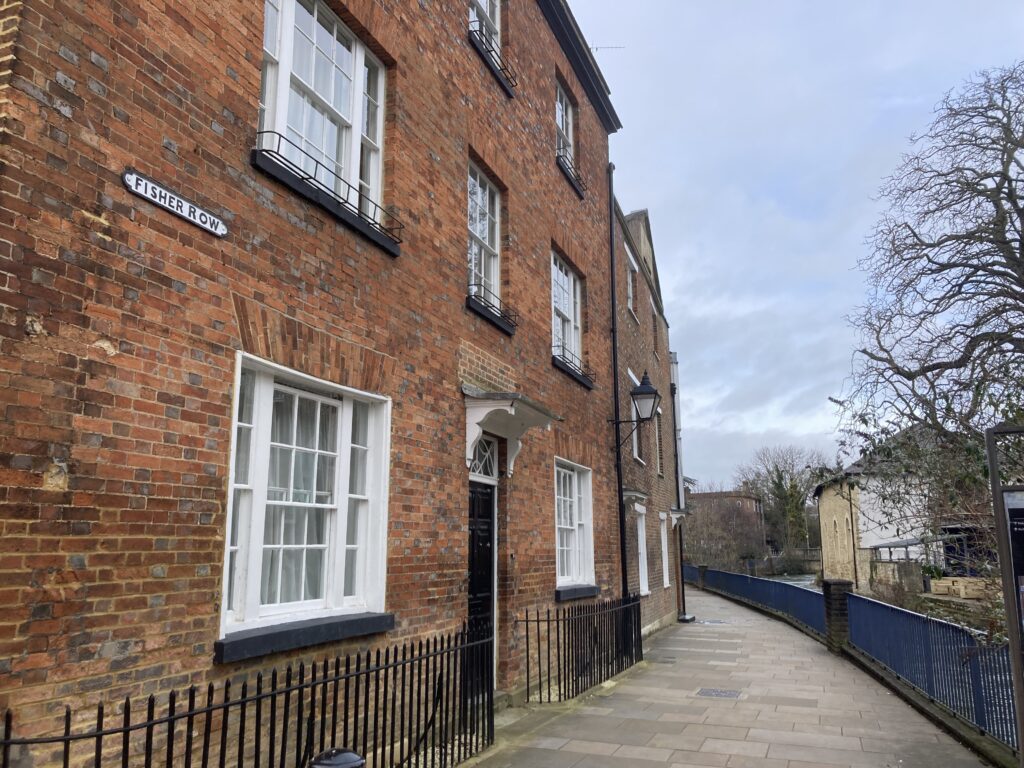
Fisher Row (above) as it is now, on Castle Mill stream. These lovely houses date from the Georgian era, but in 1659, when Orum was trading here, a new terrace of cottages had just been built (further down the row, out of sight of the picture), for the fishermen, watermen and bargemen who lived and traded alongside the water. Recorded as being of high quality, sadly they were demolished in 1958 as part of the more general slum clearance.
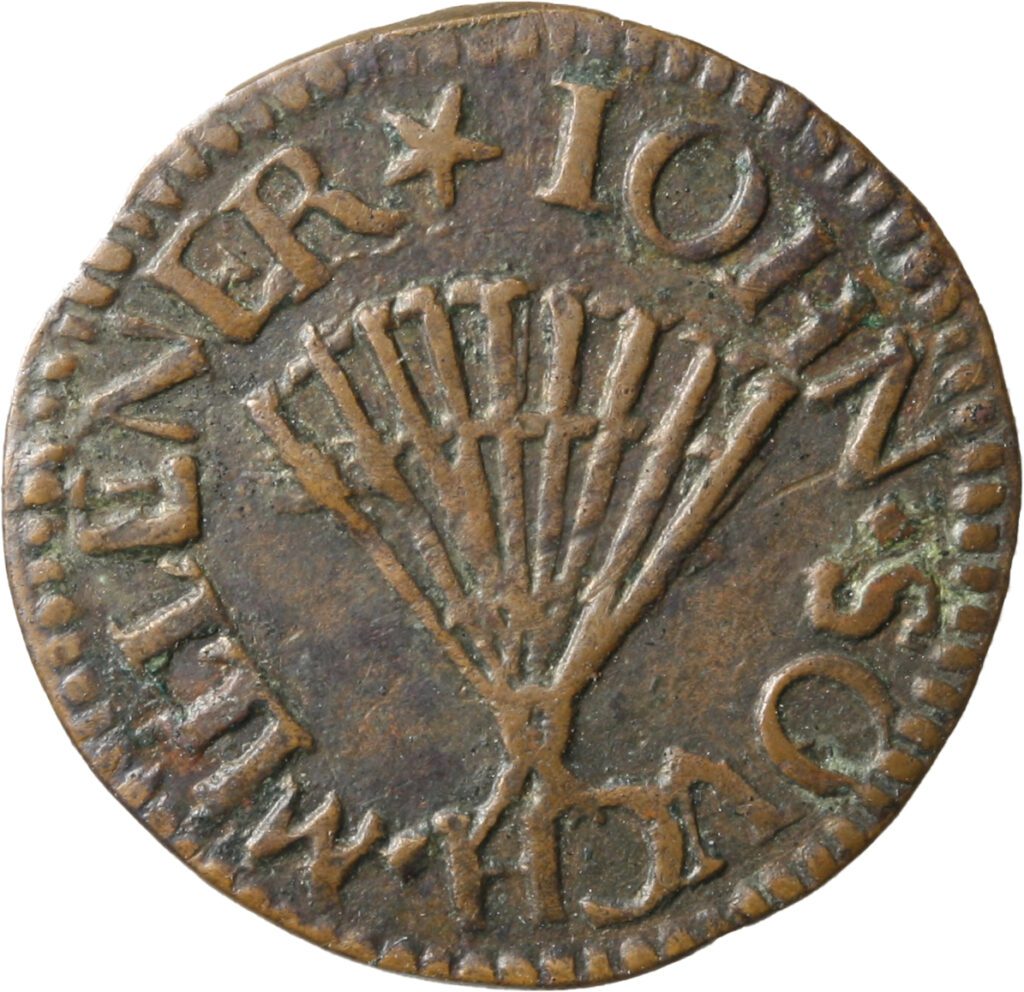
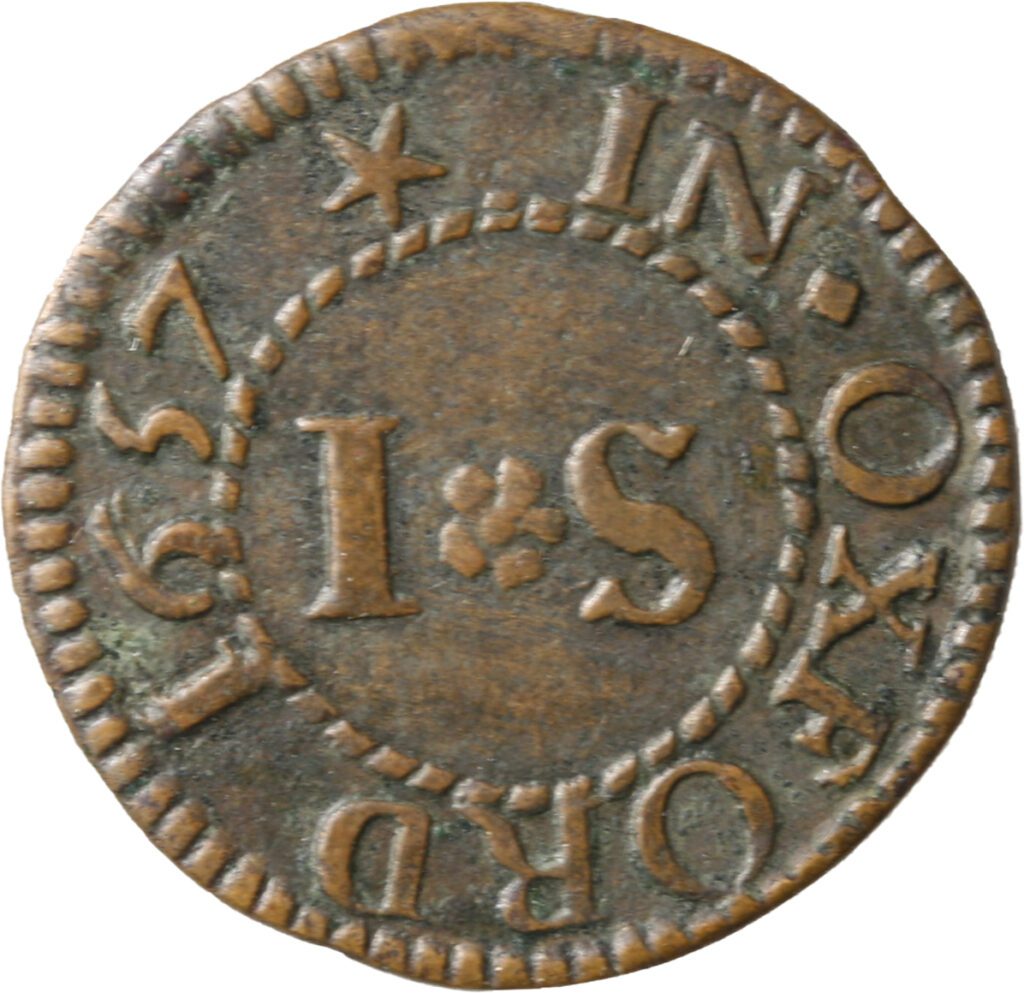
John Souch 1657
Souch was a milliner and draper, selling both hats and ribbons. He uses a fan to denote his trade and this he hung outside the shop, where Shepherd and Woodward is now. We know little about Souch except that one night while he was out, a fire raged through the premises. His wife, stuck inside on the top floor, was engulfed by the flames.
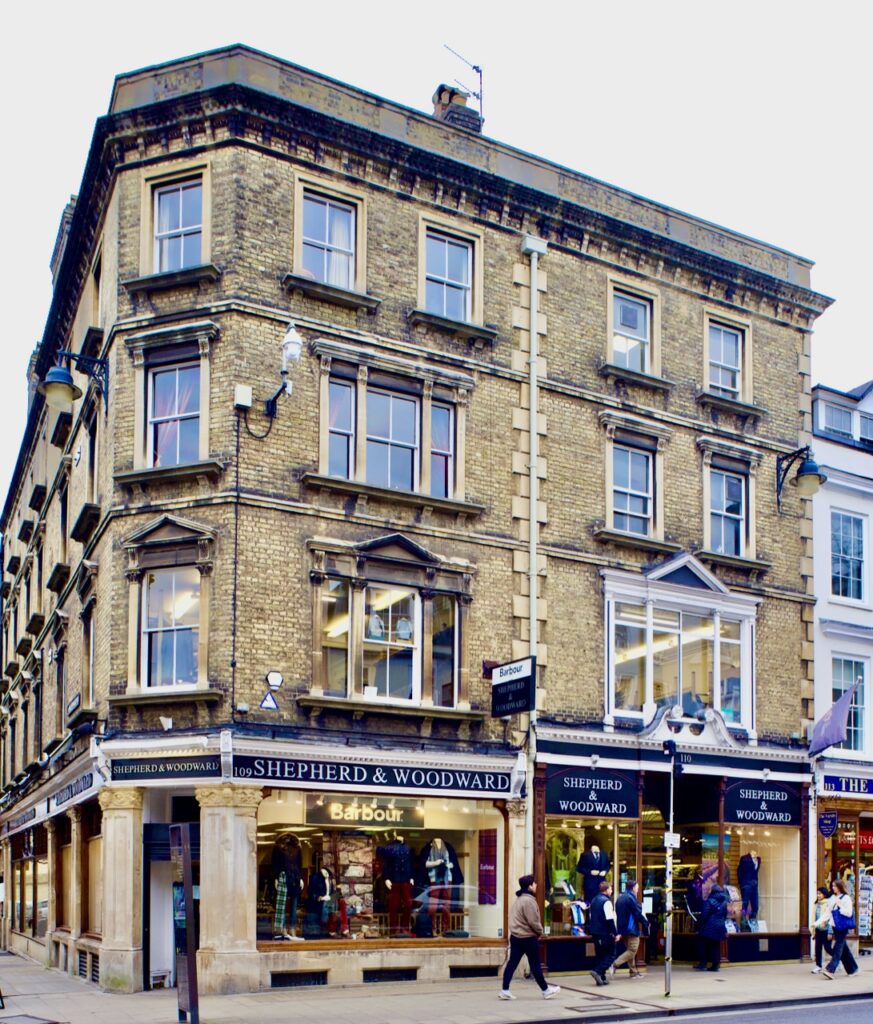
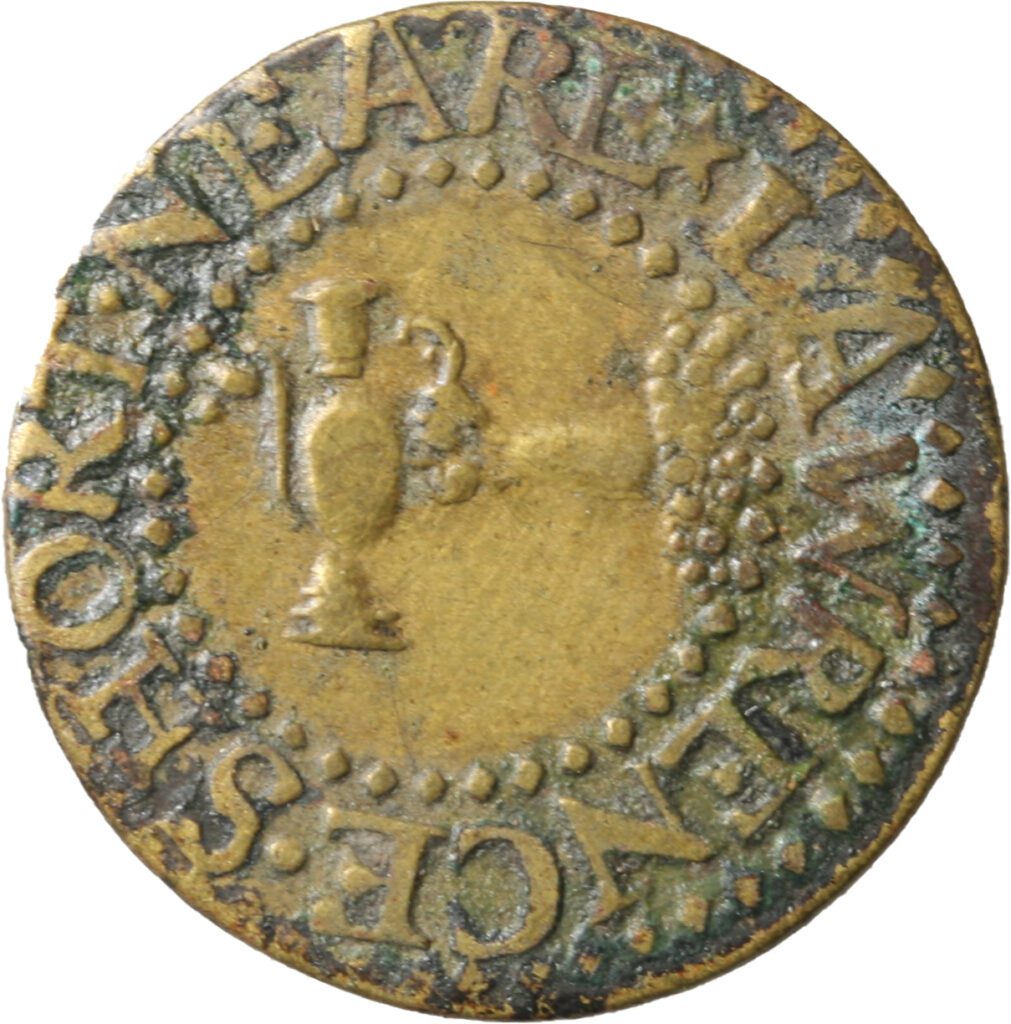
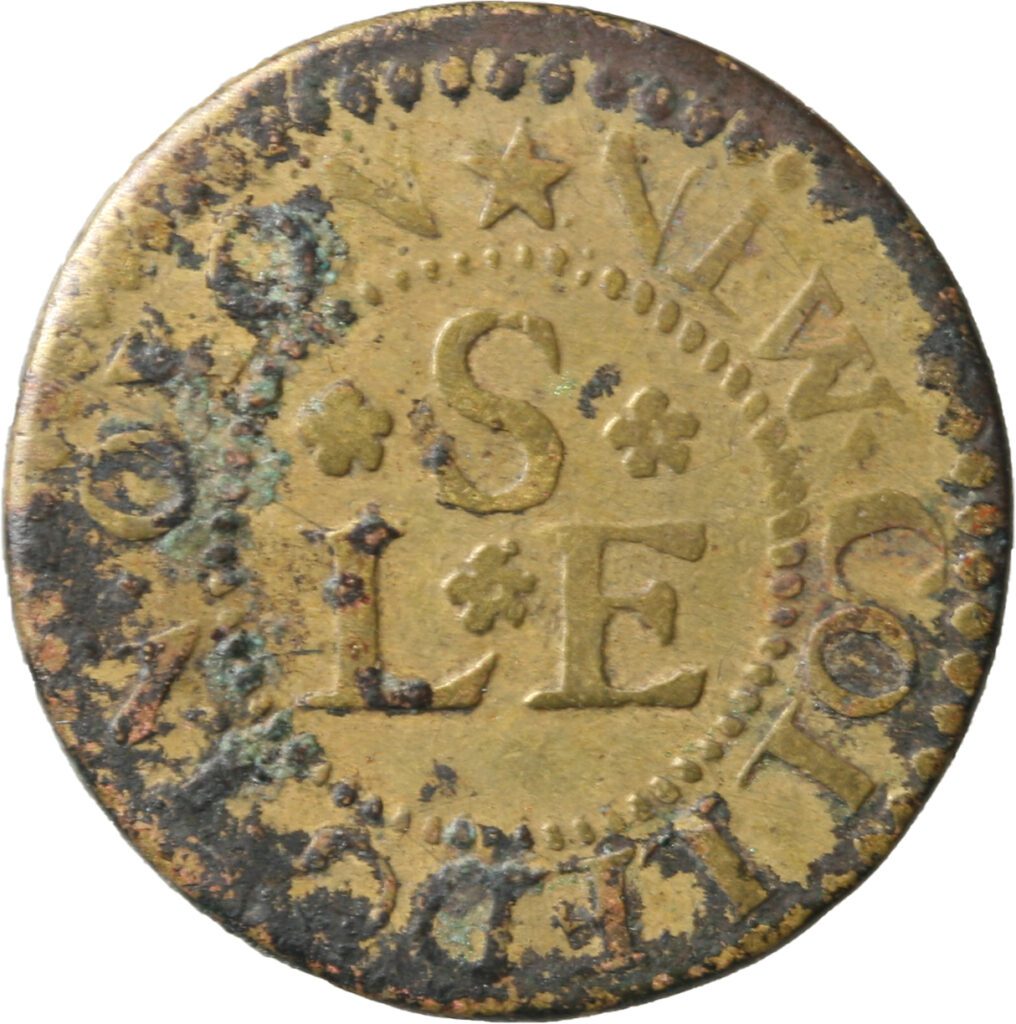
Lawrence Short
Small change was needed in places such as taverns, but also in a growing number of coffee houses that were popping up in Oxford during the 1650’s. One such house, off New College Lane was leased by Lawrence Short, who uses a hand holding a coffee pot poised to fill the cup, as his emblem. Known as ‘penny universities’ as this was the price of a cup of coffee (no £3 flat whites then) these were places to catch up on the local gossip and read the latest political pamphlet. Short installed a library in his study for the use of his clientele, and encouraged play and poetry readings.
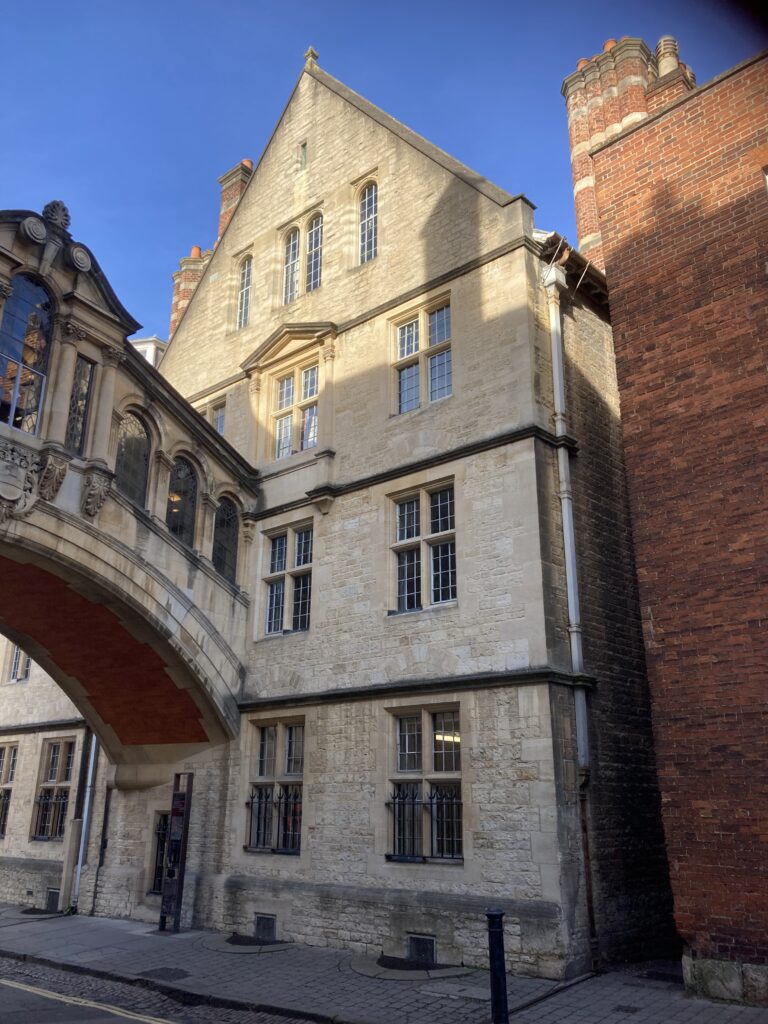
Short’s coffee house was somewhere to the north of New College Lane, down what was then called Hell’s Passage, an alleyway to the right of Hertford’s famous bridge (above) the name now sanitised to Helen’s Passage. It would have certainly stood inside the boundary of the city wall and used by University people. The houses (below in Bath Place) on the other side of the wall, were built by Flemish weavers about 50 years before Short was trading. This area later became infamous for illegal gambling.
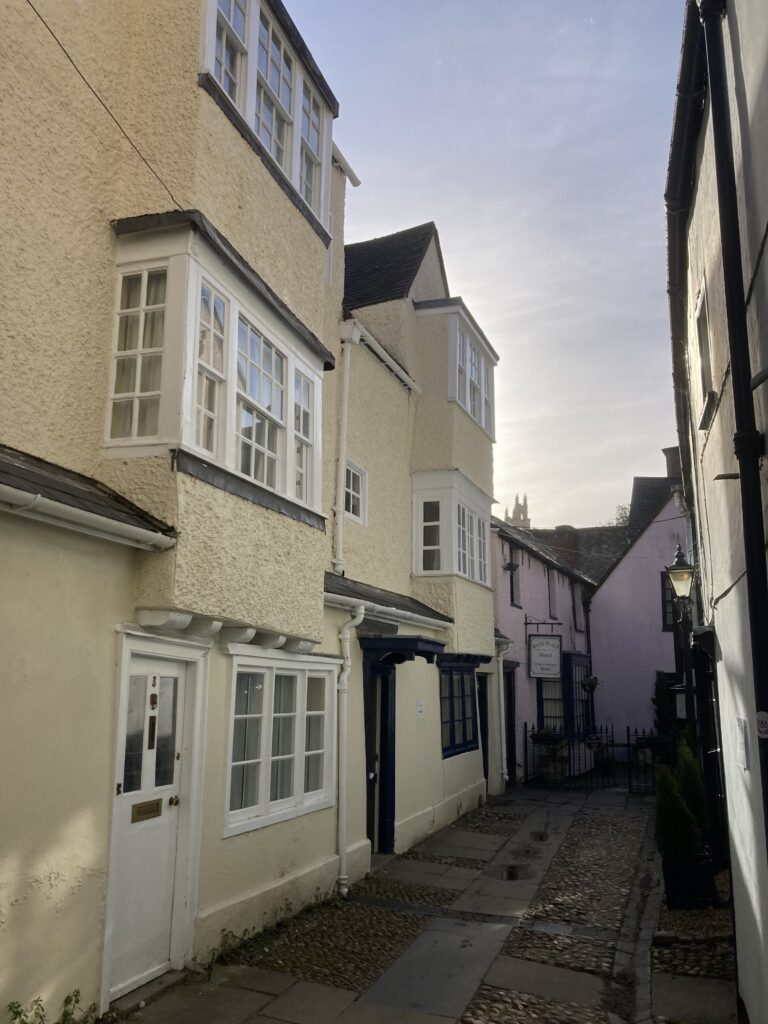
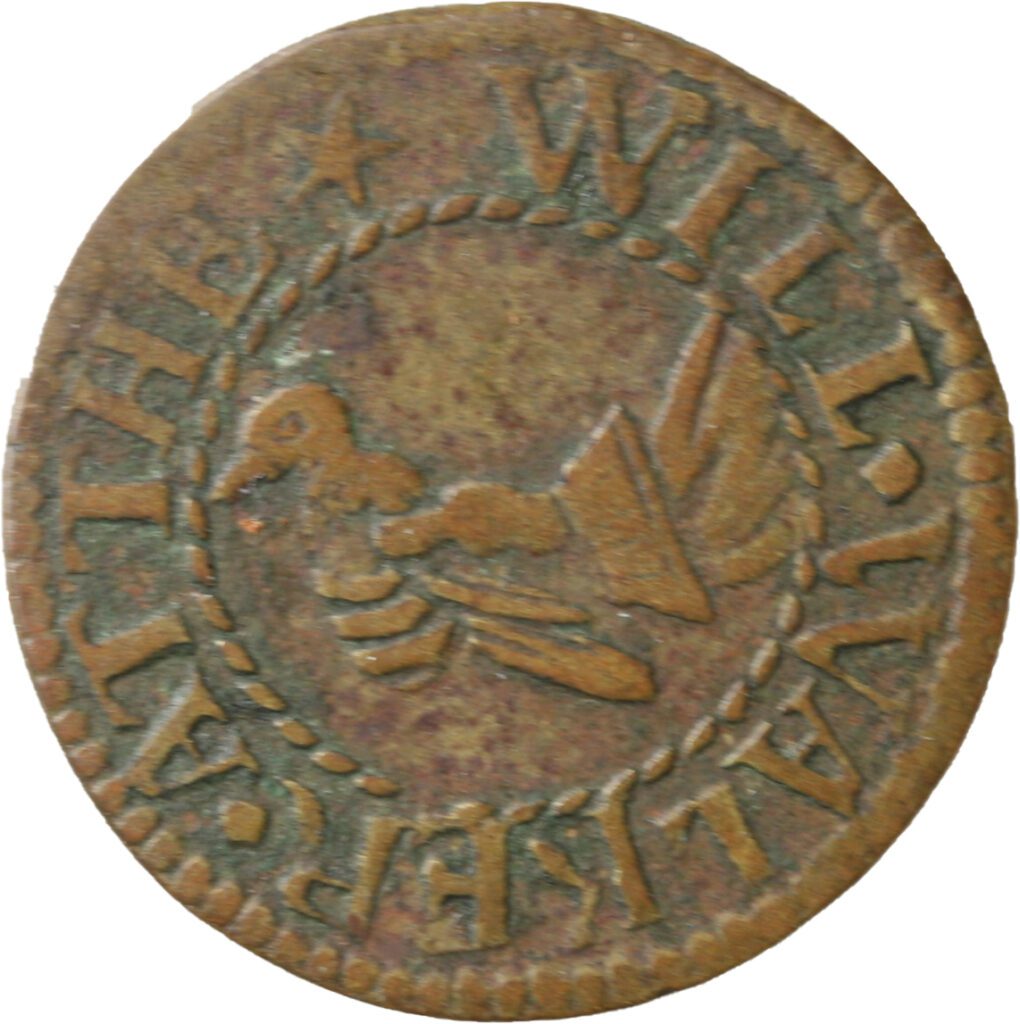
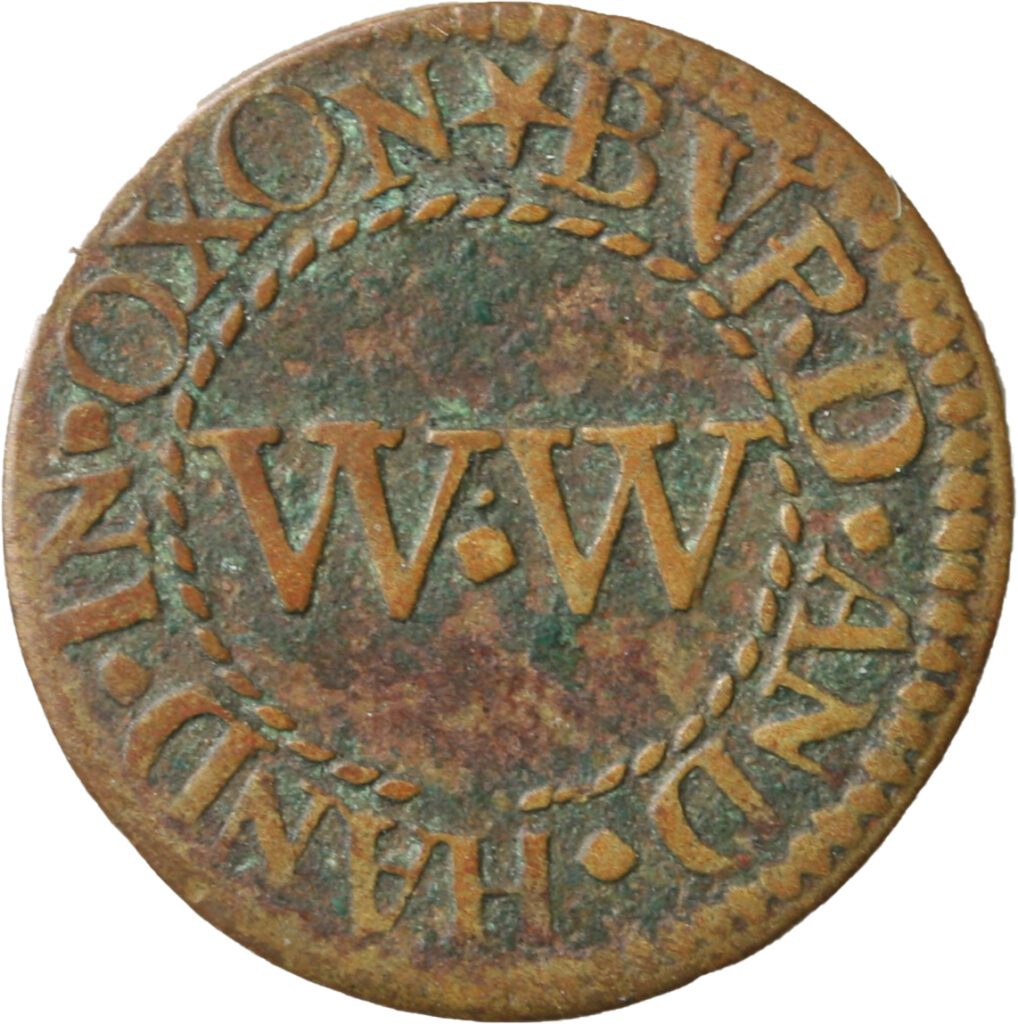
William Walker
A bird in the hand is the sign William Walker used for his many grocer’s shops, including one on the corner of Ship Street and Turl Street, (below as it is now) an Indian restaurant during my childhood, and for a short time the QI private members club and now sadly empty. Walker became Mayor three times, attending the coronation of James 11, after which he was given a knighthood. By all accounts he loved fine clothes, parading around in his mayoral finery. Indeed when he died a wealthy man he thought it important to leave money in his will not only for the poor, but also to buy a scarlet cloak for any Mayor who couldn’t afford to purchase one of his own.
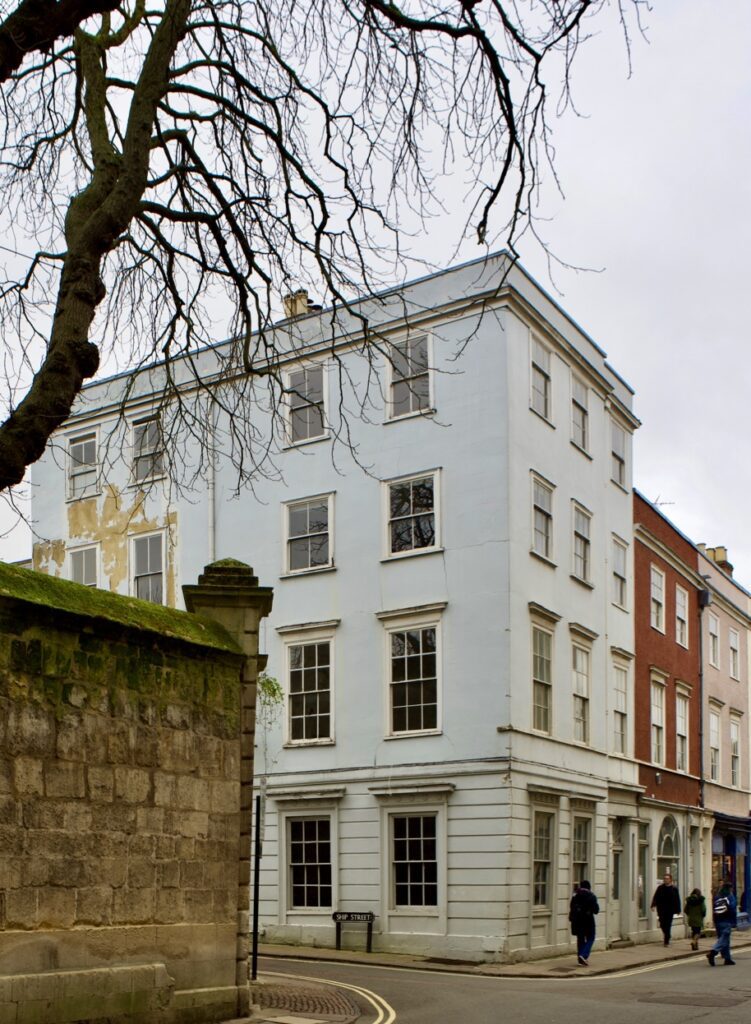
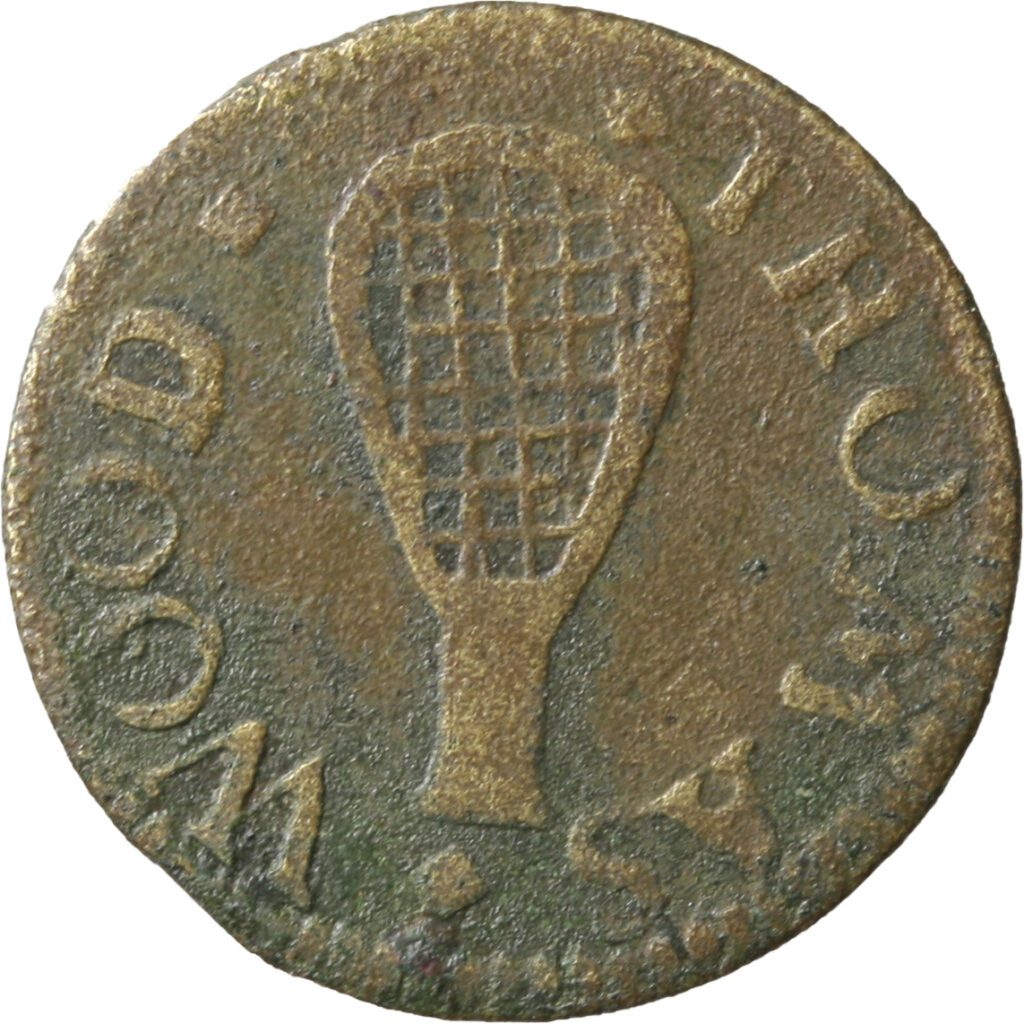
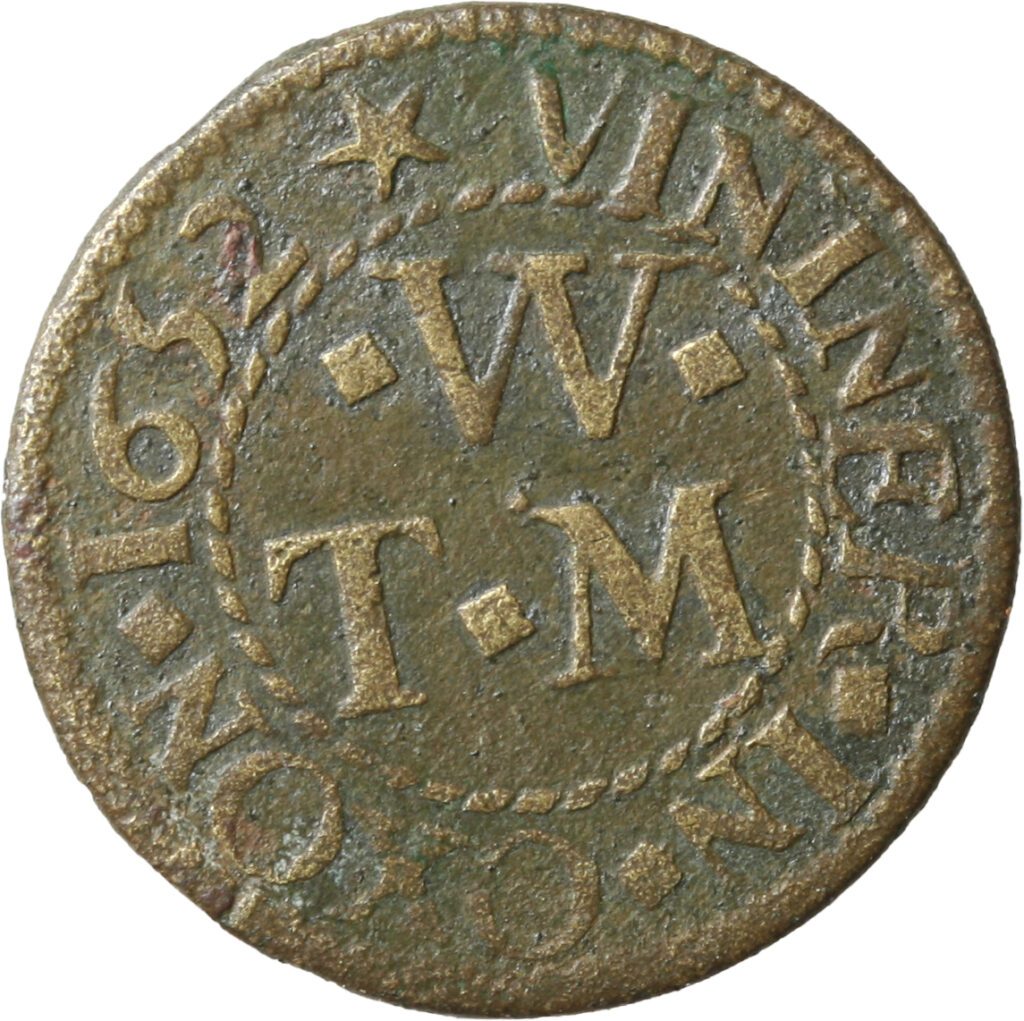
Thomas Wood 1652
Thomas Wood was a vintner and lived at 104 and 105 High St, where Sanders map shop is now. He ran a public house there called the Salutation, a lively place well known for hosting concerts and a popular dance school. But this was just a side kick for his far more profitable business – racket clubs. The sport had become very popular by the mid 17th century – and there were no fewer than five courts in Oxford. One of Wood’s courts was behind his pub on the corner of Oriel Street, long since demolished to make way for Oriel College lecture halls. However he sublet another of his courts to his servant Thomas Burnham (who also issued tokens with a racket symbol). This was off Merton Street and still thrives to this day as a club for real tennis enthusiasts. (pictured below)
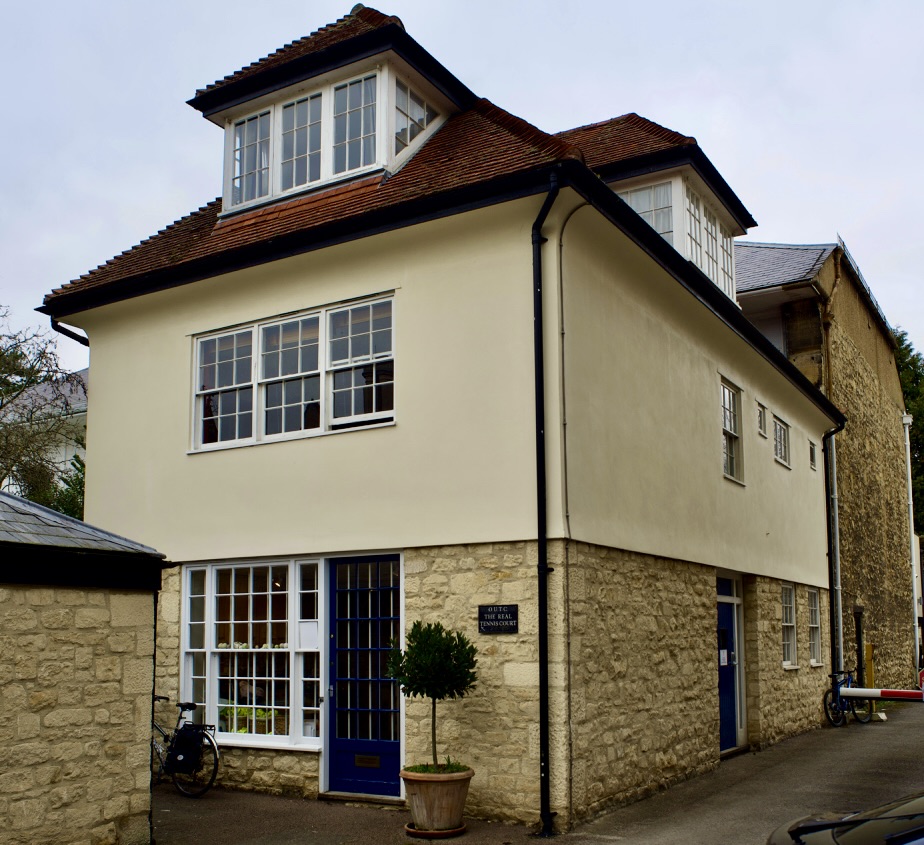
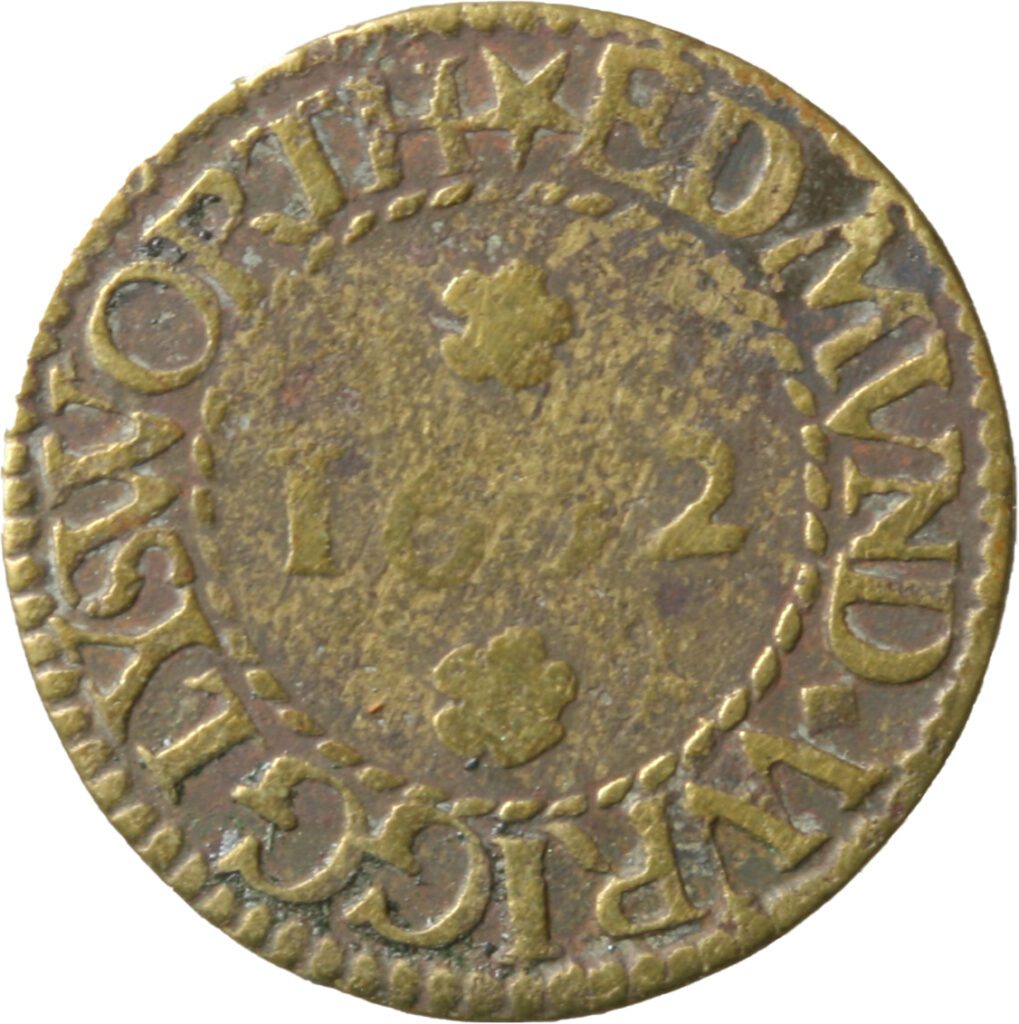
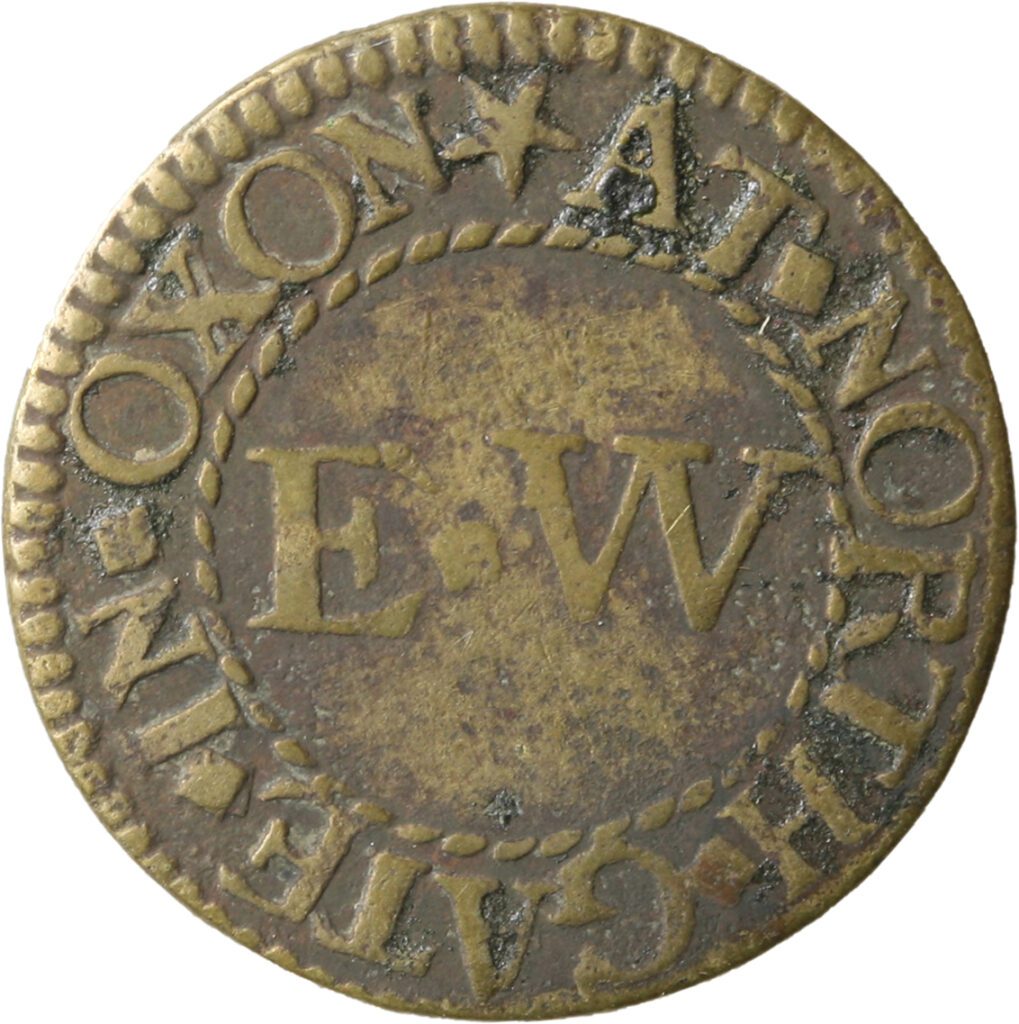
Edmund Wrigglysworth
A baker and general grocer trading just outside the city walls at the end of Broad Street, his token is included for his wonderful name alone.
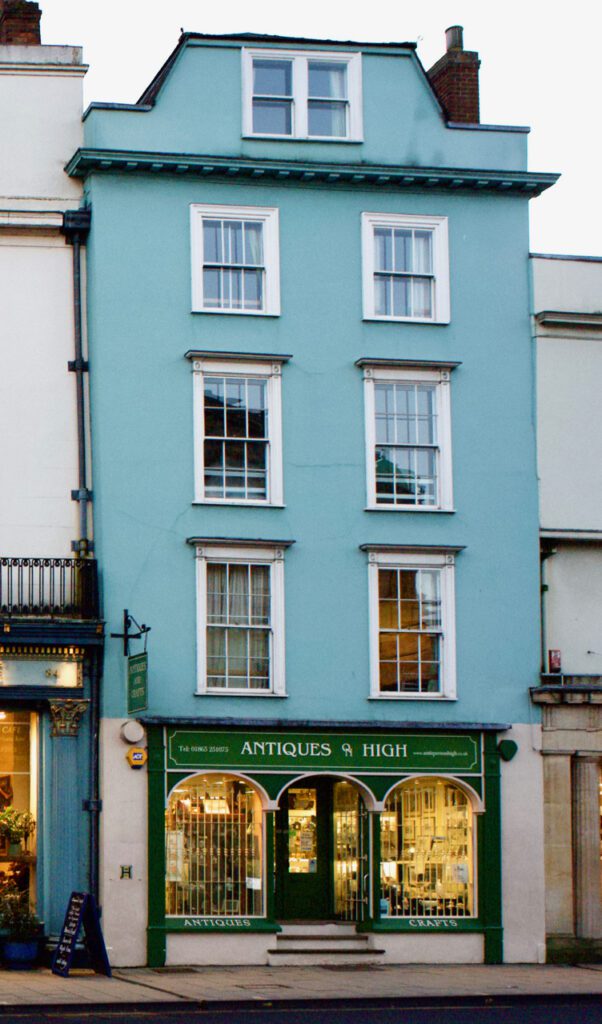
Antiques on High where I bought my token. The house dates back to the 17th century, when my token was being used at the Sign of the Three Blackbirds across the way.
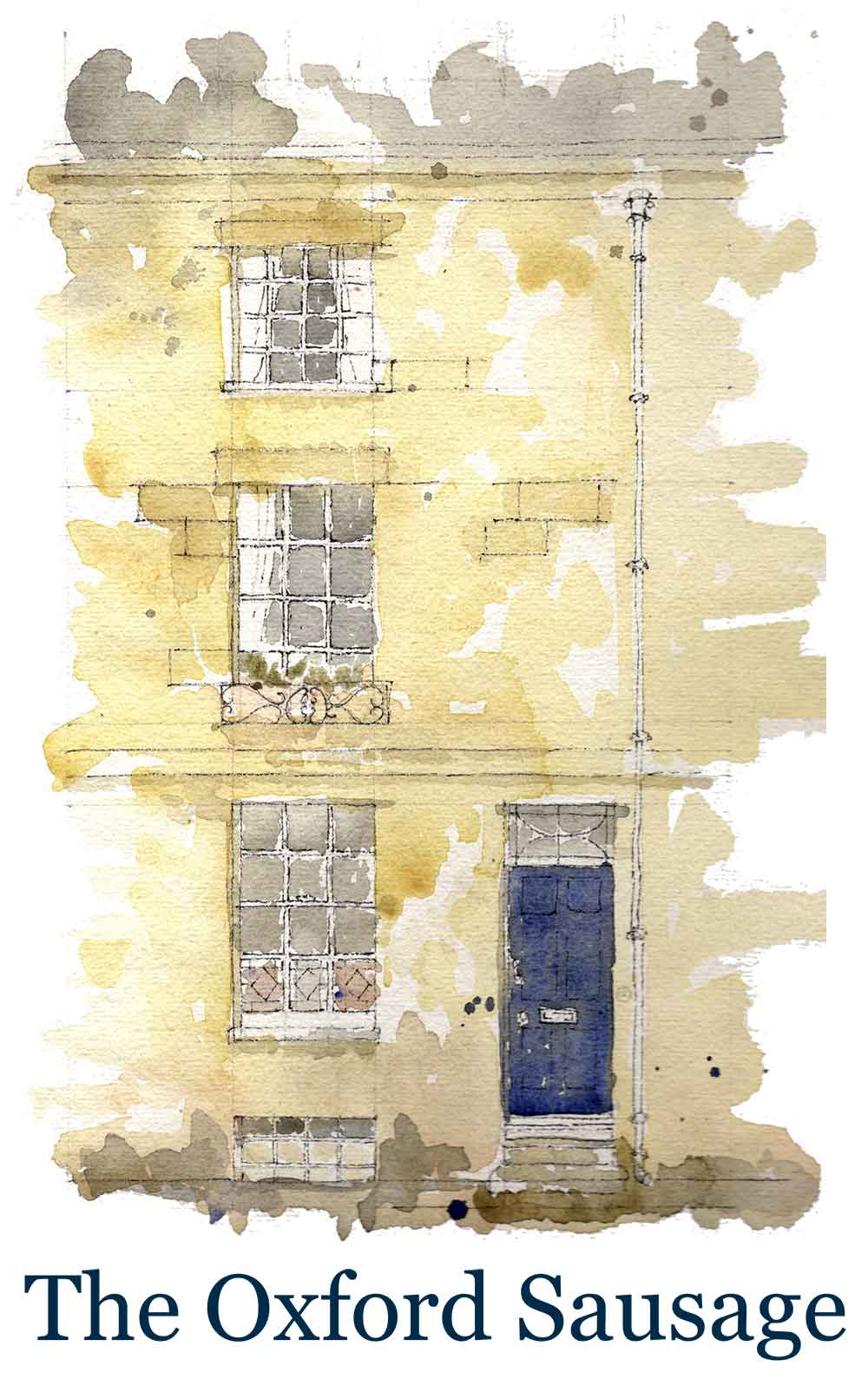

2 Comments
Join the discussion and tell us your opinion.
Loved this Arabella! Those tokens are so beautiful and evocative, and it is wonderful to be able to pair them up with so many familiar buildings.
In an extraordinary piece of plague-time humour/bravado someone wrote above a house where these were minted during the 1636 epidemic “Lord Have Mercy upon us, for this house is full of tokens” – ‘tokens’ also being a name for early onset signs of the plague.
Nice tweet below of a mudlarker finding a token!
https://twitter.com/liz_lizanderson/status/1746143108281114663
This is a great article and shows the results of hard work. Kudos to Arabella—you appear to be finding your voice more and more.